How To Write a Tour Description (Step-by-Step Example)
By Kyla Steeves
Share this article:
- Facebook icon
- LinkedIn icon
- Twitter icon

Why is it that when someone asks about a tour over the phone, you can explain it in a way that makes them enthusiastic about booking, but as soon as you sit down to write a tour description, your mind goes blank?
You just can’t seem to translate that excitement into words.
Don’t be hard on yourself; writing a description for tours and travel is notoriously tricky, even for experienced copywriters. How do you possibly describe an abstract experience to someone who’s never visited your destination before? Try to fit all the information they need to know into a single paragraph? While still persuading them to book?
Here’s the good news. The more tour descriptions you write, the better you’ll get at it, and you’ll start to learn what works as you increase conversion rates . But until you get up to speed, you might find it helpful to have a tour description example to work off of.
If that’s the case, let’s workshop one together as I teach you a few insider copywriting tricks you can apply to both your tour descriptions on your website and online travel agent (OTA) listings today.

An okay tour description example
Our award-winning coffee tour offers guests an inside look into traditional sustainable farming in Panama and its impact on the coffee industry. We’ve carefully designed this tour to show visitors every stage of the production process, from growing to roasting. Our guides are knowledgeable locals who lead a walk-through of a scenic farm, explain how the slopes of Volcan Baru make some of the world’s best coffee and show how to brew a delicious cup. We also provide free hotel pick-up and drop-off, bottled water, and a custom bag of whole beans to take home.
How do you write a tour description that’s better?

1. Speak to your audience
A tour description is not the place to boast — that’s for writing an About Us page . Your potential customers won’t care about how many awards your tour has won or what inspired you to create the tour. The only thing on their mind is what’s in it for them.
Before you even start writing a tour description, you need to figure out who you’re targeting; better put, who is your ideal guest? Once you have that answer, you can learn how to speak directly to them with a tone of voice they can relate to while highlighting exactly what they’re looking for.
Then, using the You Rule , you can write for that one person, which means instead of using the words “we” or “our,” you flip the script to support a “you” or “your” message. This makes the tour description more of a casual conversation, like chatting with them in-person or over the phone, helping to build a personal connection online.
Revision #1
Get an inside look into traditional sustainable farming and its impact on the coffee industry. You’ll learn about every stage of the production process, from growing to roasting, by our local experts who’ll take you on a walk-through of a scenic farm, explain how the slopes of Volcan Baru make the world’s best coffee, and show you how to brew a delicious cup. You’ll also get free hotel pick-up and drop-off, bottled water, and a custom bag of whole beans to take home.
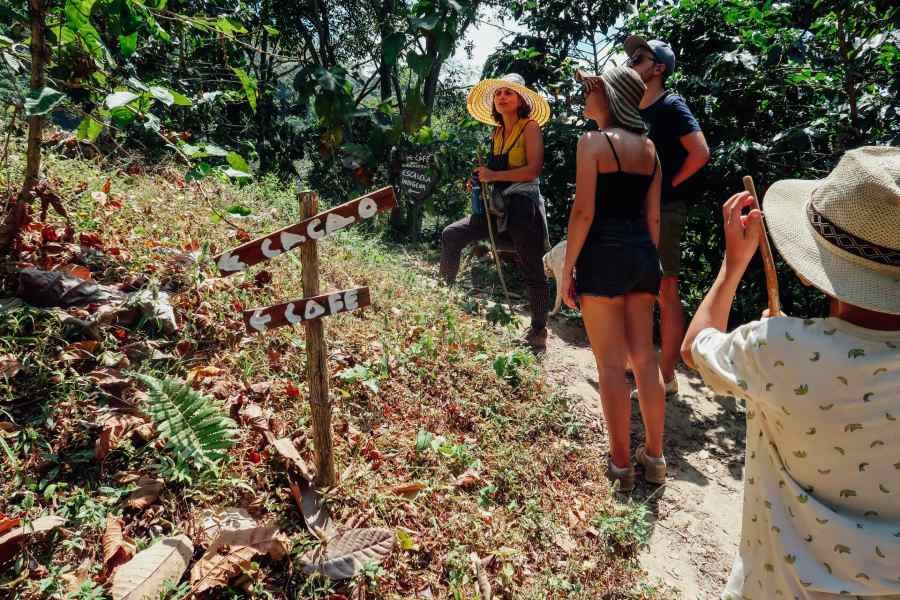
2. Start with a hook
Since a tour description is often your last chance to win someone over, your first sentence has got to be attention-grabbing. Like a headline, it needs to stand out, draw the visitor in, and encourage them to keep reading. And the best way to do that is to zero in on a particular feature of the experience and turn it into a hook.
How? By going beyond the obvious benefit and tapping into the emotional value. For instance, it’s one thing to say that a tour has small group sizes and another to point out why that matters on a personal level. If you can solve what that is for your target guest, you’ll know how to talk to their heart and not their wallet, making the tour irresistible.
To come up with a hook, read your recent reviews to see what previous guests liked most about the tour and why. When you notice a trend, that’s what you should focus on as your leading benefit, keeping in mind the exact phrasing they use to make your hook more specific and relatable.
If you are just starting out and don’t have any reviews yet, you can always break down the unique selling points of your tour using a similar table below, making sure to ask the million-dollar question, “so what?” to dig deeper into why guests will care.
Then, pick the best one.

Revision #2
Love your morning cup of joe even more by discovering what goes into a satisfying brew on a coffee tour. You’ll learn about every stage of the production process, from growing to roasting, by our local experts who’ll take you on a walk-through of a real farm, explain how the slopes of Volcan Baru make the world’s best coffee, and show you how to brew a delicious cup. You’ll also get free hotel pick-up and drop-off, bottled water, and a custom bag of whole beans to take home.
3. Show, don’t tell
There’s a popular TikTok and Twitter trend right now called #TheTellMeChallenge, where people ask others to tell them about something, usually a topic they can relate to, without explicitly stating it. Like tell me you have kids without telling me you have kids.
As fun as this new challenge is, there’s actually something you can learn from it when writing your tour and travel description or any marketing content for your business, and that is: show, don’t tell .
People are tired of overused travel words from tour operators, such as unforgettable, picturesque, hidden gem, must-see, etc. They’ve completely lost their meaning and impact and often get filtered out by the reader as fluff. On top of that, anyone can say their tour is terrifying or relaxing or exciting without justification.
Instead, it’s much better to describe the tour in a way that elicits an emotional response rather than outright telling someone how to feel. You can do that by using more verbs than vague adjectives because verbs pull the reader into the action, especially if you use present tense to trick the brain into thinking the event is currently happening.
Revision #3
Love your morning cup of joe even more by discovering what goes into a satisfying brew on a coffee tour. Stroll through the fields of a coffee farm in the Boquete highlands, plucking ripe berries with your own hands. Meet professional roasters and learn how to create a flavourful blend in a homemade roaster before tasting the difference between premium Geisha coffee and store-bought grinds. Get free hotel pick-up and drop-off, bottled water, and a custom bag of whole beans to take home.

4. Tell a story
Tour descriptions are different from product descriptions in that people aren’t only looking for certain features to compare across the board. Yes, they want to know what the main highlights are, but more so, they’re hoping to get an idea of what the tour will be like from start to finish.
That’s because before they get to this point, it’s likely they’ve already visualized the type of experience they want to have based on stories from their favourite travel bloggers, recommendations from friends, and real-life advice in Tripadvisor forums.
By setting a scene, you can bring the tour to life, helping to paint a picture in their head that’s similar to what they currently have in mind — or better. While also doing the impossible, making an intangible experience tangible by incorporating the magic of sensory words and vivid imagery.
That said, if you aren’t the greatest storyteller, try consulting your guides, who are the experts and conveniently have the itinerary memorized. Simply ask them to describe the tour as a story, and depending on the length, summarize the key parts into 3-4 sentences.
Revision #4
Love your morning cup of joe even more by discovering what goes into a satisfying brew on a coffee tour. Stroll through the fields of a coffee farm on the slopes of Volcan Baru, hearing stories of farmers who’ve worked the land, growing premium Geisha coffee enriched by volcanic ash and lunar cycles. After plucking ripe, red berries with your own hands, you meet with professional roasters to create your own custom blend to take home before sipping an aromatic espresso with notes of mango on the open patio, admiring a panoramic view of the cloud-forest and the reddish-brown crema lining your cup. Can your coffee taste any better? Get free hotel pick-up and drop-off and bottled water.

5. Break up the details
At this point, you’re probably wondering when we’re going to get to the essential details. The description is already long enough; are we going to make it longer with more info?
Well, if you take a quick look at listings on OTA sites like Viator or GetYourGuide, you’ll see that they break up additional details using bullet points and clear section headings. Seeing as these global travel companies have an enormous booking volume, it’s safe to say that they’ve got the conversion data to back up this copywriting technique.
Of course, it’s not hard to see why it works. Lists are easy to read compared to big, dense paragraphs. And since most website visitors are scanners, not readers, using bullet form in your booking page design can help them find what they need to know — faster.
So, what details do you cover?
Popular categories are What’s Included, What to Bring, Highlights, How to Get There, Cancellation Policy, and Safety Measures — you can use one or all depending on the type of tour. You can also answer questions you often get asked about your tours and activities, or at the very least, link to your FAQ page.
Revision #5
Love your morning cup of joe even more by discovering what goes into a satisfying brew on a coffee tour. Stroll through the fields of a coffee farm on the slopes of Volcan Baru, hearing stories of farmers who’ve worked the land, growing premium Geisha coffee enriched by volcanic ash and lunar cycles. After plucking ripe, red berries with your own hands, you meet with professional roasters to create your own custom blend to take home before sipping an aromatic espresso with notes of mango on the open patio, admiring a panoramic view of the cloud-forest and reddish-brown crema lining your cup. Can your coffee taste any better?
What’s Included:
- Hotel pick-up and drop-off
- Bottled water
- Sample bag of whole beans
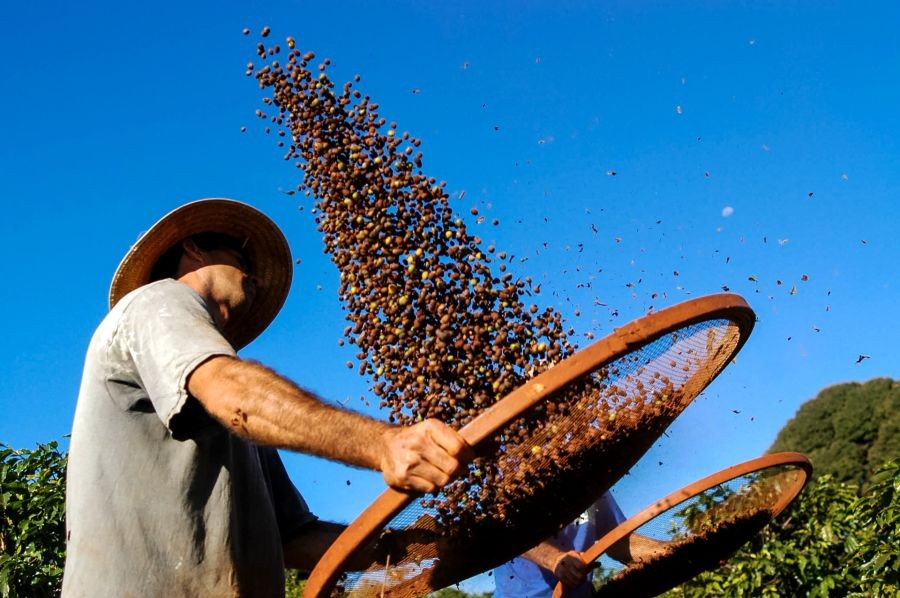
6. Remember keywords
Whenever you write copy for your website, you have to remember that you’re not just writing for your visitors; you’re writing for Google. That means you should try to use every keyword opportunity possible for better on-page SEO (search engine optimization), especially when coming up with tour name ideas .
When it comes to your tour descriptions, your travel and tourism keywords will change per tour depending on the specific queries people use to find them in the first place. If you haven’t done keyword research before, you can start by simply entering one of your tours into Google and see what related searches come up at the bottom of the results page.
Then, all you have to do is find instances where you say “tour” in the description and replace it with the popular search term instead. Doing this step last ensures your keywords fit naturally within the tour description, rather than being stuffed.
The best description for tours and travel
Love your morning cup of joe even more by discovering what goes into a satisfying brew on a Boquete coffee tour. Stroll through the fields of a coffee farm on the slopes of Volcan Baru, hearing stories of farmers who’ve worked the land, growing premium Geisha coffee enriched by volcanic ash and lunar cycles. After plucking ripe, red berries with your own hands, you meet with professional roasters to create your own custom blend to take home before sipping an aromatic espresso with notes of mango on the open patio, admiring a panoramic view of the cloud-forest and reddish-brown crema lining your cup. Can your coffee taste any better?

Isn’t that much better? Doesn’t it make you want to book this tour right now?
Now, it’s your turn!
Want to get marketing tips like this right in your inbox?

Subscribe to the Checkfront Newsletter
Read new tips on how to get more bookings every month.
Related Articles
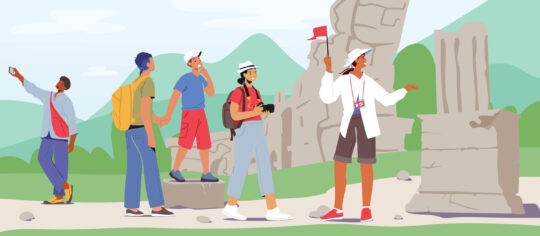
How to start a Tour Operator business in 2024: A step-by-step guide
Dreaming of running a successful tour company? Check out these strategies!
- Business Tips

3 tips to tackle cart abandonment and capture more bookings in 2023
Imagine this: a shopper comes across your website and finds an enticing experience offering. They read your product description, flick…
Search Blog
Subscribe to our newsletter.
Get tips and strategies to grow your business and impress your guests.
Blog Categories
- Booking Management
- Guest Experience
- Marketing Strategies
- Operator Highlights
How to write a tour description properly for your travel agency website (with examples)

A successful tour description takes a lot of effort to write. But it will reward you by attracting potential visitors and turning them into paid customers.
A well-written tour description provides essential information and sparks the imagination, making people eager to experience what you offer.
A visitor chooses to stay on your tour booking website or look into alternative possibilities based only on the tour description. Therefore, making the tour descriptions informative, attractive and precise is crucial.
In this guide, we’ll walk you through the steps to craft an engaging tour description and provide examples to illustrate each point.
Table of Contents
What exactly is a tour description?
As the name implies, a tour description provides all the necessary information about the trip. Crafting a tour description the right way aids in converting site visitors into paying customers.
A tour description is like a detailed travel story. It’s the written piece that spills the beans about a specific tour or adventure you might want. You’ll usually find them available on websites, brochures, and flyers.
They can provide you with an inside taste of the tour. In short, a tour description is a piece of writing that summarizes the entire tour, focusing on the advantages and enticing readers to book the trip.
Think of it as offering a sneak peek into the tour and itinerary packages. A good tour description will spill the tea on the must-see places, the daily plan, what’s included (and what’s not), what makes this tour unique, and all the other nitty-gritty.
It’s like a teaser trailer for your travel dreams, aiming to make you say, “Yes, sign me up for this amazing experience”. To make your travel business website successful, creating a compelling tour description for your travel booking website can be a crucial initiative.
An example of a tour description of the African Wildlife Safari
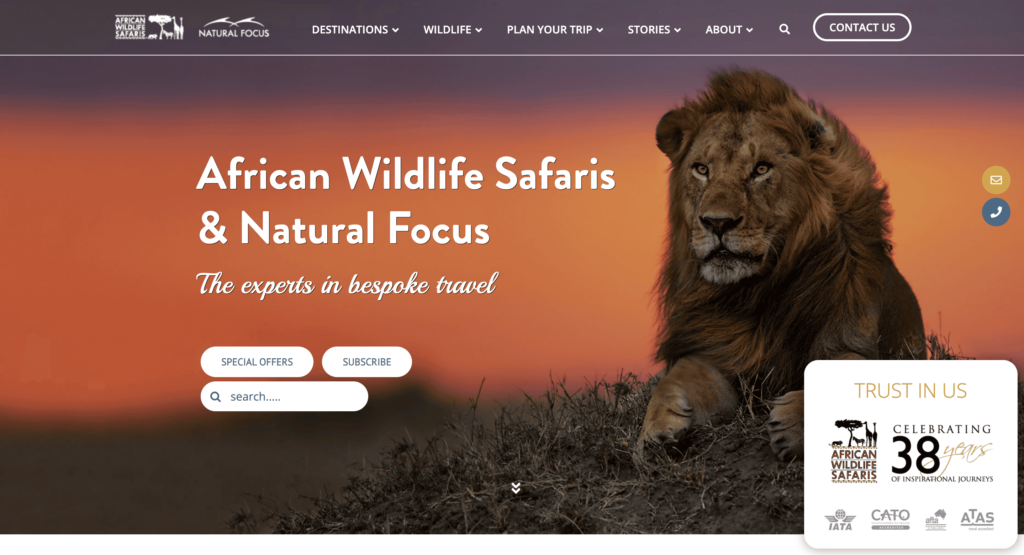
African Adventure Safari: Explore the Untamed Wilderness
Get ready for the adventure of a lifetime as we take you deep into the heart of Africa’s untamed wilderness.
Wildlife Encounters Like No Other
Imagine waking up to the symphony of the African bush, surrounded by the calls of lions, elephants, and a colorful array of birds. This safari will bring you up close and personal with the Big Five and countless other incredible creatures. Watch in amazement as giraffes gracefully wander by the place where zebras playfully graze.
Spectacular Scenery
The landscapes you’ll witness are straight out of a National Geographic documentary. From the vast Savannahs of the Serengeti to the breathtaking beauty of the Okavango Delta , every moment will leave you breathless.
Sunset Safaris & Campfires
As the sun dips below the horizon, we’ll gather around crackling campfires, sharing stories under the star-studded African sky. It’s a magical way to end each day of exploration.
Camping with comfort
You don’t need to worry if you are far from home because our comfortable camps will give you the best experience of both sides of the world: the wild charm and comforts of home.
Expert Guides
Our local guides are passionate about the African wilderness and will share their knowledge, ensuring you leave not only with incredible memories but also a deeper understanding of this remarkable ecosystem.
A Journey of a Lifetime
This African Adventure Safari isn’t just a trip; it’s a life-changing experience. When you return home, your heart will appreciate the beauty and memories you made while adventuring the amazing landscapes.
So, are you ready to dive on this unforgettable journey? Join us and become a part of the African story.
Book your spot now and let the wild adventure begin!
Pretty good, right? So, how to write an excellent tour description like this for your website? Let’s dive into the details.
How to properly write a tour description for your website
You can use the following guide to write a tour description that converts properly:
Know your audience

Before you start writing, it’s essential to know your target audience. It might sound a bit cliche, but knowing the people you want to attract to your tour packages is imperative. Knowing their interests, desires, and expectations will help you tailor your description to speak directly to them.
A thing to keep in mind is that you should always write for your readers by identifying their needs. You can identify the target market and tailor the packages to meet their needs.
For example , If your target audience is families looking for outdoor adventures, your tour description should highlight the fun and educational aspects that parents and kids will love.
Furthermore, use pronouns like “you” and “your” to sound more audience centric. Try not to use “we” and “our” type of pronouns. This is because when you sound audience centric, they feel more respected and may feel more inclined to your content.
It also helps you establish a more personal connection with your potential customers by making your tour description sound more conversational.
Start with a captivating hook

First impressions matter. Begin Your tour description with something that immediately grabs the reader’s attention- a catchy headline or an intriguing opening sentence.
Example: “Get Ready for the Adventure of a Lifetime: Explore the Mysteries of the Amazon Rainforest!”
Set a tone and stick to it

Maintain a particular voice tone throughout your tour explanation. The voice tone may change depending on the brand personality and the kind of tour package you are promoting.
For instance, comparatively larger tour operators frequently adopt a formal tone. While a smaller, locally focused business might adopt a more informal tone to establish a more personal connection with its clients,
Always shape the tone of your writing according to your target audience, as was mentioned in a previous example.
Highlight what makes your tour package unique
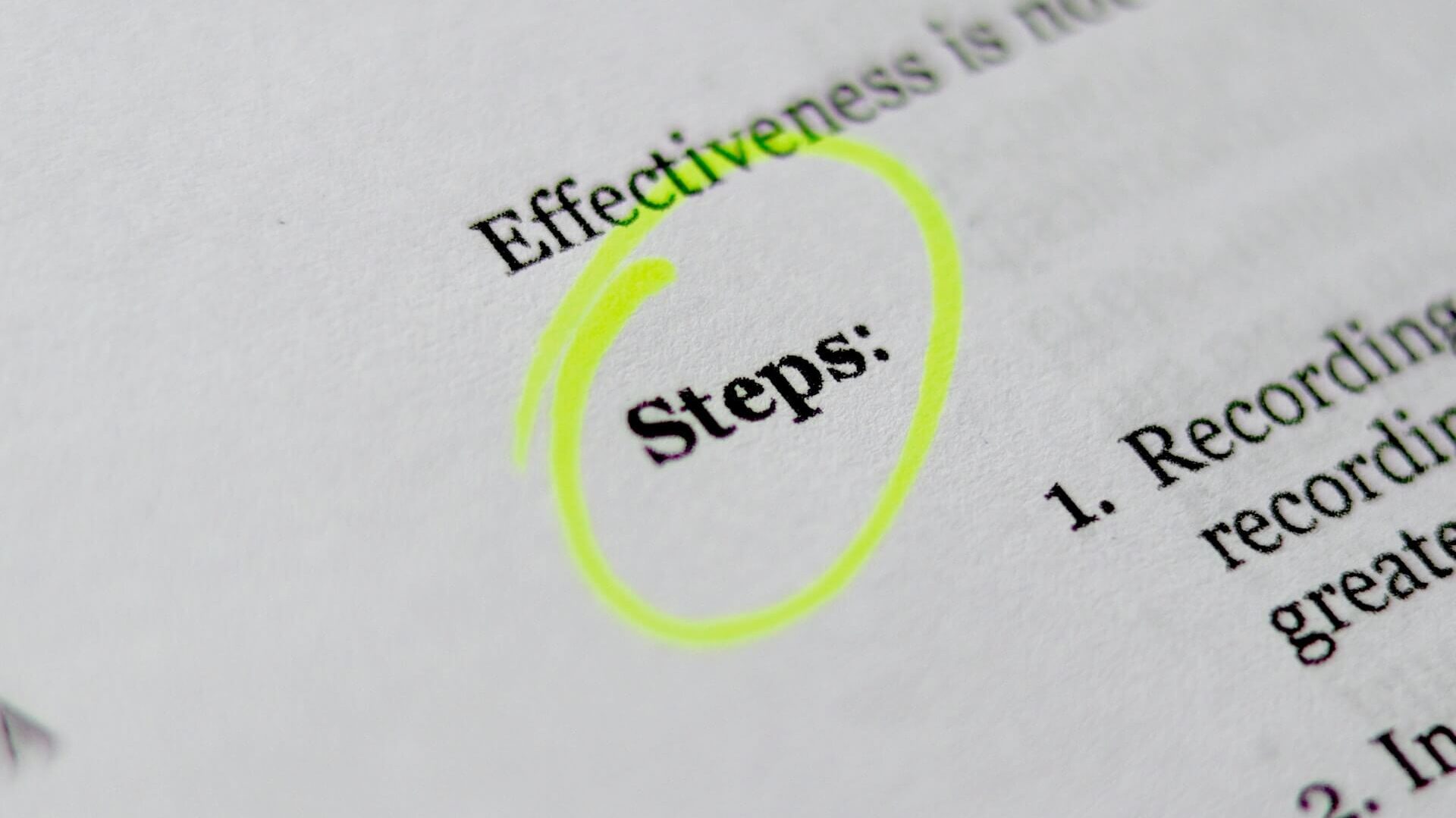
Your tour description should answer the question: “Why should someone choose your tour package over others?” What makes your offering stand out? Showcase these unique features prominently.
For example , “Our Amazon Rainforest tour is an extraordinary journey through pristine, untouched areas, guided by local experts who’ll give you an authentic and immersive experience.”
Paint a vivid picture

Use descriptive language to transport your readers into the heart of the tour. Help them visualize the destination and imagine themselves participating in the activities.
For instance, “As you venture deep into the rainforest, you’ll find yourself surrounded by towering trees draped in vibrant orchids, with sunlight filtering through the dense foliage, casting dappled shadows on the forest floor.”
Providing necessary tour details
In the world of tour descriptions, it’s not about painting dreamy landscapes with words. Practical information is the backbone of your description – it’s what helps your readers plan, prepare, and make informed travel decisions.
You can consider the following tour details as an example:
Tour Destination: Kenya
Our 5-day wildlife safari in Kenya runs from October 10th to October 15th, 2023.
The tour package costs $2,500 per person. All the visitors should meet at Nairobi Airport.
Tour Itinerary:
Day 1: Arrive in Nairobi and check in to your hotel.
Day 2: Explore Nairobi National Park.
Day 3: Begin the safari in Maasai Mara.
Day 4: Visit the National Museum of Kenya.
Day 5: Follow the Oloolua Nature Trail.
What to Pack:
Hiking boots, lightweight clothing, a warm jacket and a pair of binoculars.
Fitness Requirements:
- This tour involves moderate hiking and requires a reasonable level of fitness.
- Participants have to walk in uneven terrain for nearly 2 hours.
Accommodation:
You’ll stay in comfortable lodges and eco-friendly campsites, all carefully selected to dip you in the natural beauty of Kenya.
Transportation
Air-conditioned vans and scenic boat rides in waterways.
Emergency Contact
Phone Number and email Address.
Showcase the benefits of your tour packages
Make sure to highlight the advantages and unique experiences your participants will gain, driving their decision to choose your tour package.
For example : “Our photography tour will ignite your passion for capturing the world’s beauty and take your photography skills to the next level.”
Build trust through testimonials and reviews

Frankly, there’s no marketing tool more powerful than the honest voices of your past participants. The reviews and testimonials will glimpse the real experiences of travelers participating in your tour business.
For example , “Here’s what some of our recent travelers had to say about their adventures with us.”
Create urgency in your tour descriptions
Motivate your readers to take action by creating a sense of urgency. Mention limited availability or special offers to encourage them to book now.
For instance you can consider this copy, “Act fast – spots for our June tours are limited! Secure your place now and receive a complimentary rainforest survival guide.”
Call to Action
End your description with a clear and compelling call to action. Encourage readers to book the tours, get in touch for more details, or subscribe to your newsletter.
It can be like, “Ready to embark on this extraordinary journey? Book your Amazon Rainforest adventure today and let the wilderness captivate your soul.
Related article: How to create a hotel booking website with WordPress (The ultimate guide)
Frequently asked questions (FAQs) on writing tour descriptions
Question 1: What is the purpose of a tour description on a website?
Answer: A website’s tour description informs potential clients about a trip’s specifics, high points, and logistics, luring them to book or request more information.
Question 2: How long should a tour description be?
Answer: While there’s no definitive answer, we suggest keeping it brief, ideally between 200 and 500 words, and include just enough details to give the reader a flavor of the tour without boring them.
Question 3: What are the essential elements of a tour description?
Answer: Some of the essential elements of a tour description are the tour’s name, duration, highlights, schedule, cost, meeting location, inclusions, exclusions, and booking instructions are important details.
Question 4: How can I make my tour description engaging?
Answer: To convey a sense of adventure and excitement, use intriguing language, storytelling, and detailed descriptions. Highlight special benefits and experiences.
Question 5: Should I include images in my tour description?
Answer: Yes, adding great photographs or a gallery can improve the website’s aesthetic appeal and aid visitors in picturing the experience.
Question 6: Is mentioning the tour’s difficulty level or physical requirements important?
Answer: Yes, informing participants of the tour’s physical requirements is essential to ensuring their readiness.
Question 7: How can I convey the value of the tour to potential customers?
Answer: Outline the advantages and distinctive selling factors of the tour. Describe how it differs from competitors and why it is pricey.
Question 8: What should I do if my tour has multiple options or variations?
Answer: List all of the available choices, including ordinary and premium packages, and explain their distinctions.
Question 9: Should I include customer reviews or testimonials in the tour description?
Including gratifying client feedback or testimonials can increase credibility and foster confidence.
Question 10: What should I avoid in tour descriptions to make them more understandable?
Answer: Don’t use words or phrases that clients might not comprehend, such as jargon or technical terms. Avoid making inflated promises or claims as well.
Question 11: Is mentioning cancellation and refund policies in the tour description necessary ?
Answer: Yes, it is necessary. Meeting client expectations is important by being open and honest about cancellations and refund policies.
Question 12: Can I use humor in tour descriptions?
Answer: Humor can be useful, but use caution and ensure it fits your brand and the tastes of your target audience.
Question 13: How can I optimize tour descriptions for SEO?
Answer: Use pertinent keywords linked to your tour’s destination and activities to increase your website’s visibility in search engines.
Question 14: What should I do if I’m not a skilled writer?
Answer: To create captivating tour descriptions that effectively convey the essence of your offerings, think about working with a professional copywriter or editor.
Final thoughts
Crafting a captivating tour description for your travel agency website is an art form that can make all the difference in attracting potential travelers. Because it’s more than just relaying information; it’s a call of nature or a thrilling journey with your travel agency.
Remember, your tour description isn’t just words on a screen; it’s an invitation to explore the world and create lasting memories with unforgettable or surreal experiences.
So, invest time and care to craft your words on properly writing a tour description for your website. Happy writing, and here’s to many incredible adventures ahead.
There you have it! Stay tuned by subscribing to our newsletter to get more exciting news, offers, and articles right in your inbox.
You may also like...
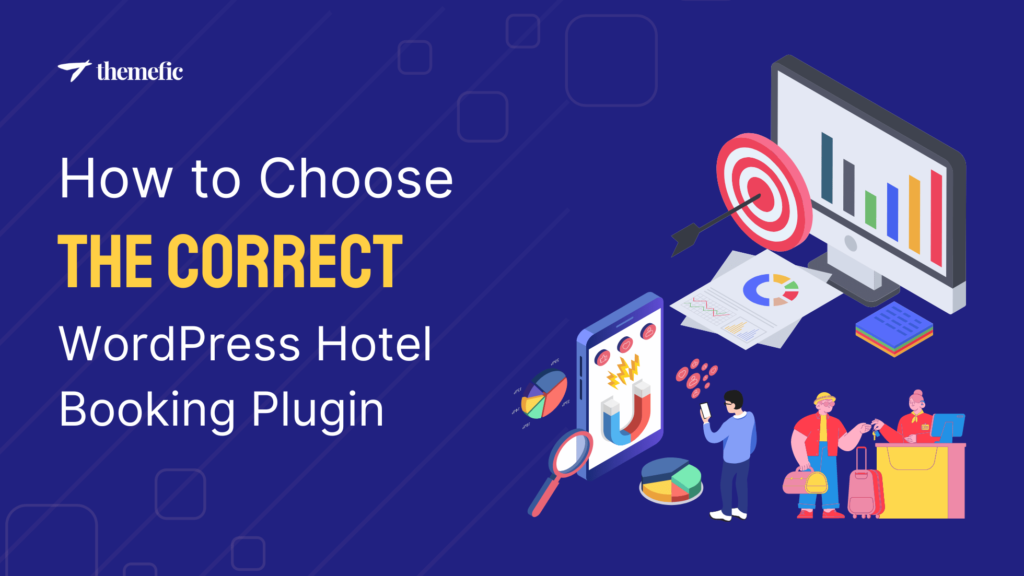
A comprehensive guide to choosing the right WordPress hotel booking plugin for your website
Hotel booking plugins can unlock huge revenue possibilities for your hotel business, leveraging the power of online media. Not to…
Continue reading →

Technologies in hotel industry: How cutting-edge innovations are transforming the owners’ and guests’ experiences
Over the past few decades, the hospitality industry has seen radical changes in terms of emerging technologies. That said, technologies…
Leave a Comment Cancel Reply
Your email address will not be published. Required fields are marked *
Save my name, email, and website in this browser for the next time I comment.
EID 2024 Celebration Deal!
Get 50% Off + 2X / Double License on Lifetime Plans.
Grab the Deal
Privacy Overview
How to write the tour description with real example
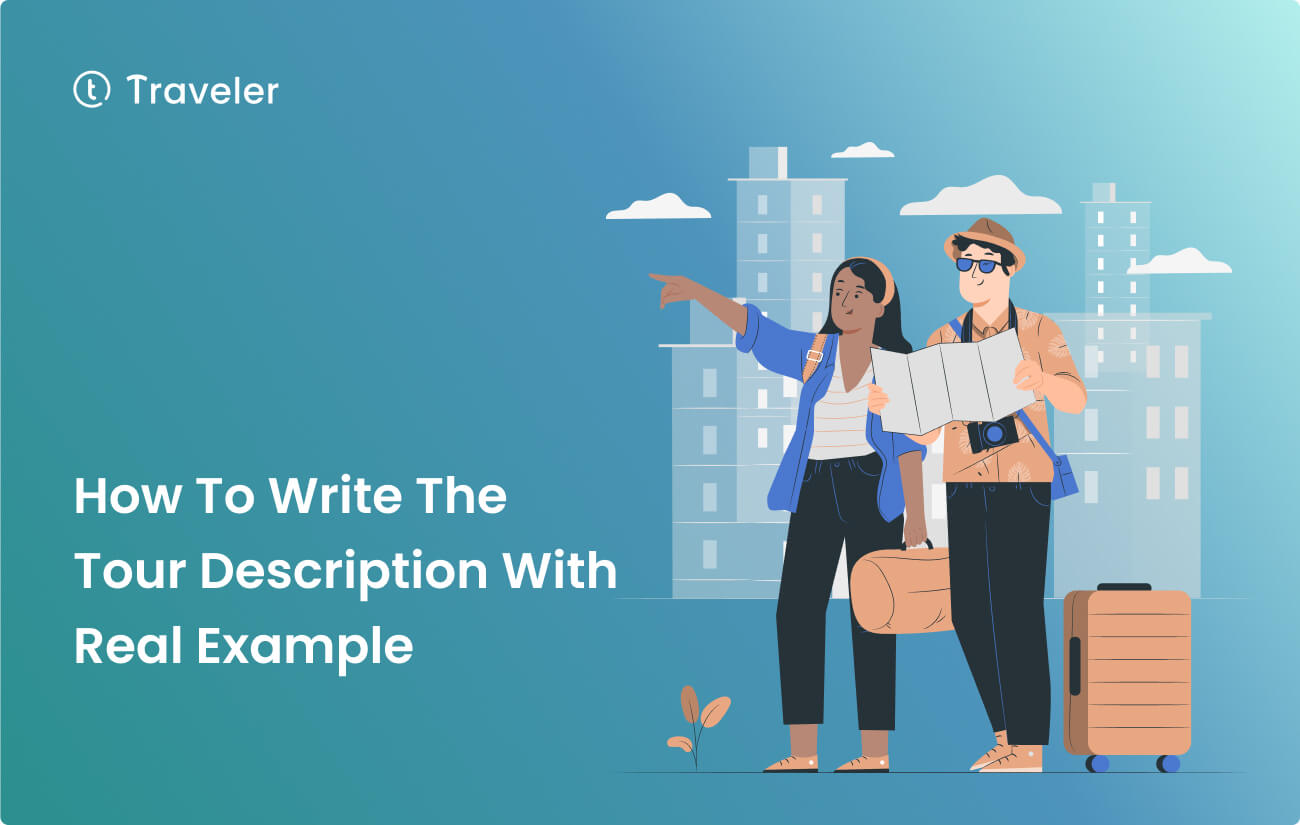
Table of Contents
A tour description is a way to inform your potential customers about the details of your tours. It is also a way to persuade them to book with you. Overall, it is your opportunity to showcase your unique selling points, highlight the benefits of your tours, and create a memorable impression on your readers.
This article will show you how to write effective tour descriptions that will boost your conversions and sales. We will guide you through the steps for writing a tour description, from choosing the right tone and language to structuring your content and adding a call to action. We will also provide you with an example tour description to use as a reference or inspiration.
If you want to learn how to write tour descriptions that sell, keep reading!
Steps for Writing a Tour Description
Now that you know why tour descriptions are important let’s see how you can write them. Writing a tour description is not as hard as it may seem if you follow some simple steps. Here are the main steps for writing a tour description to attract and convert your readers.
Determine the Purpose of the Tour
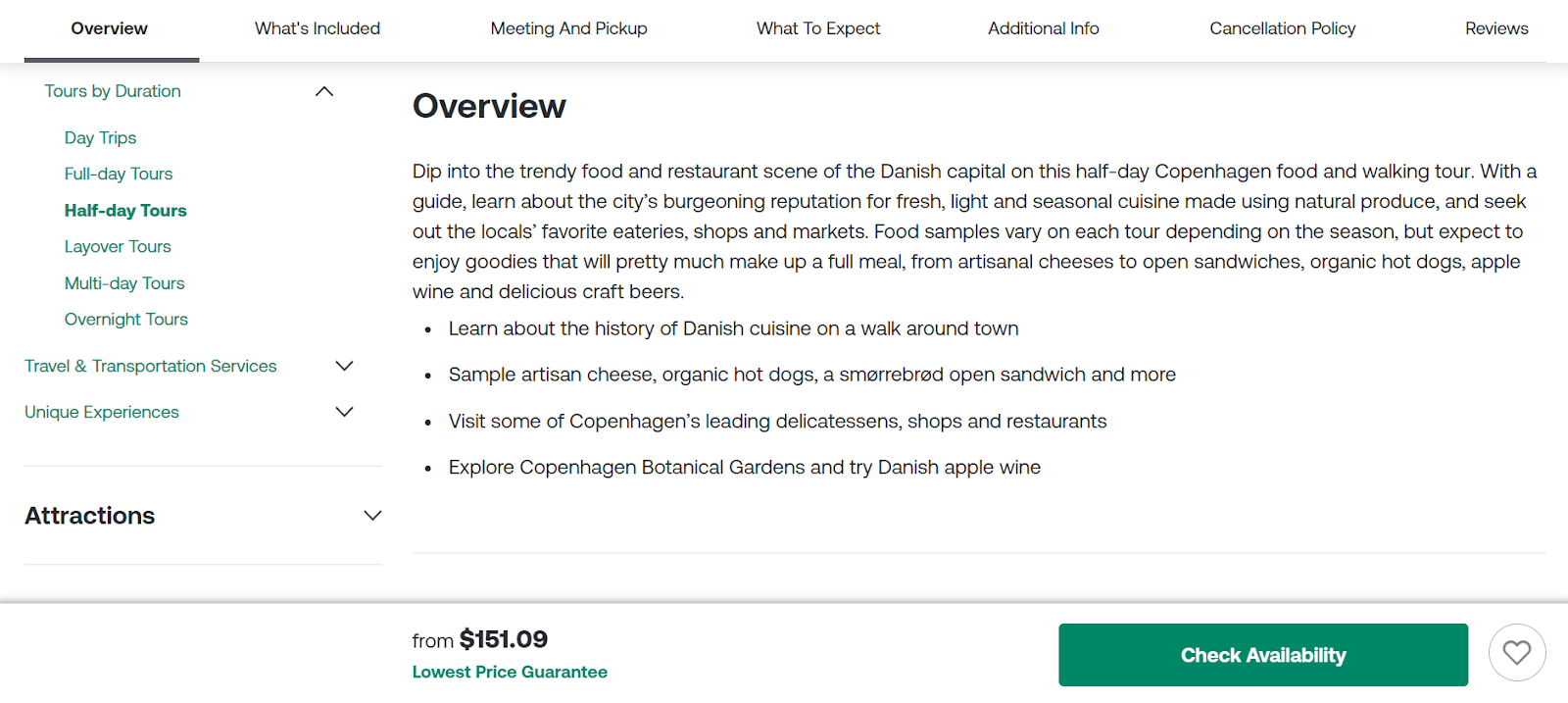
The first step for writing a tour description is to determine the tour’s purpose.
What are the tour’s key features? What makes it unique? What are the main benefits and value propositions of the tour? Why should someone choose your tour over other options? These are some of the questions you must answer before writing.
By defining the tour’s purpose, you can focus on the most relevant and appealing aspects of your tour and avoid unnecessary or boring details.
You will also be able to decide on the target audience for your tour. Who are you writing for? What are their needs, preferences, and expectations? What are their pain points and desires? Knowing your target audience, you can tailor your tour description to their interests and needs and use the right tone and language to connect with them.
Highlight the Tour Itinerary
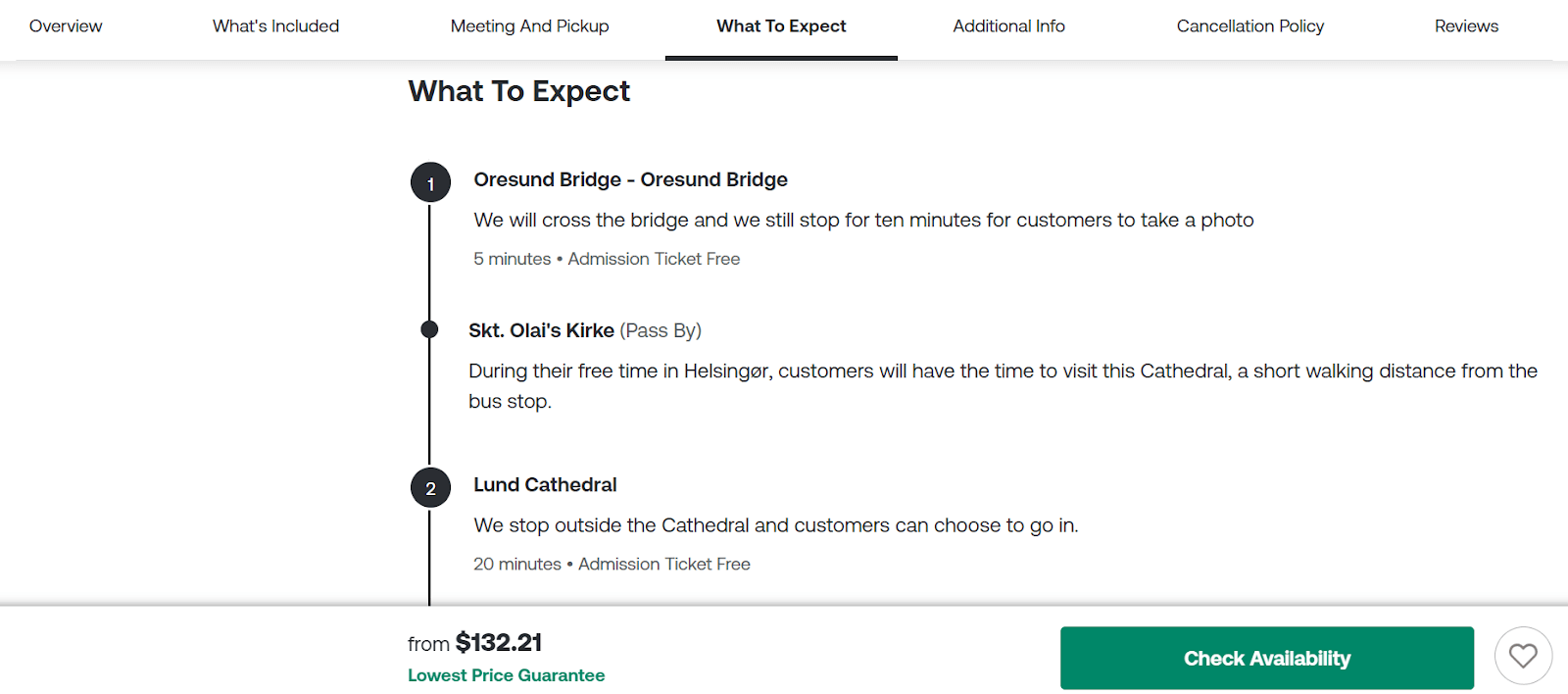
The next step for writing a tour description is highlighting the tour itinerary. This is where you provide an overview of your tour and what your customers can expect. You should list the major stops and attractions included in the tour and provide some brief information about each one.
You should also provide a timeline or schedule for the tour so that your customers can know how long each activity or destination will take. You don’t have to go into too much detail here, as you don’t want to overwhelm or bore your readers with too much information. You just want to give them a glimpse of what they will experience on your tour and spark their curiosity and excitement.
You can also use descriptive words and phrases to make your tour itinerary more vivid and engaging. For example, instead of saying, “Visit the Eiffel Tower”, you can say, “Marvel at the iconic Eiffel Tower and enjoy panoramic views of Paris”. This way, you will create a more emotional connection with your readers and make them imagine themselves on your tour.
Describe the Experience
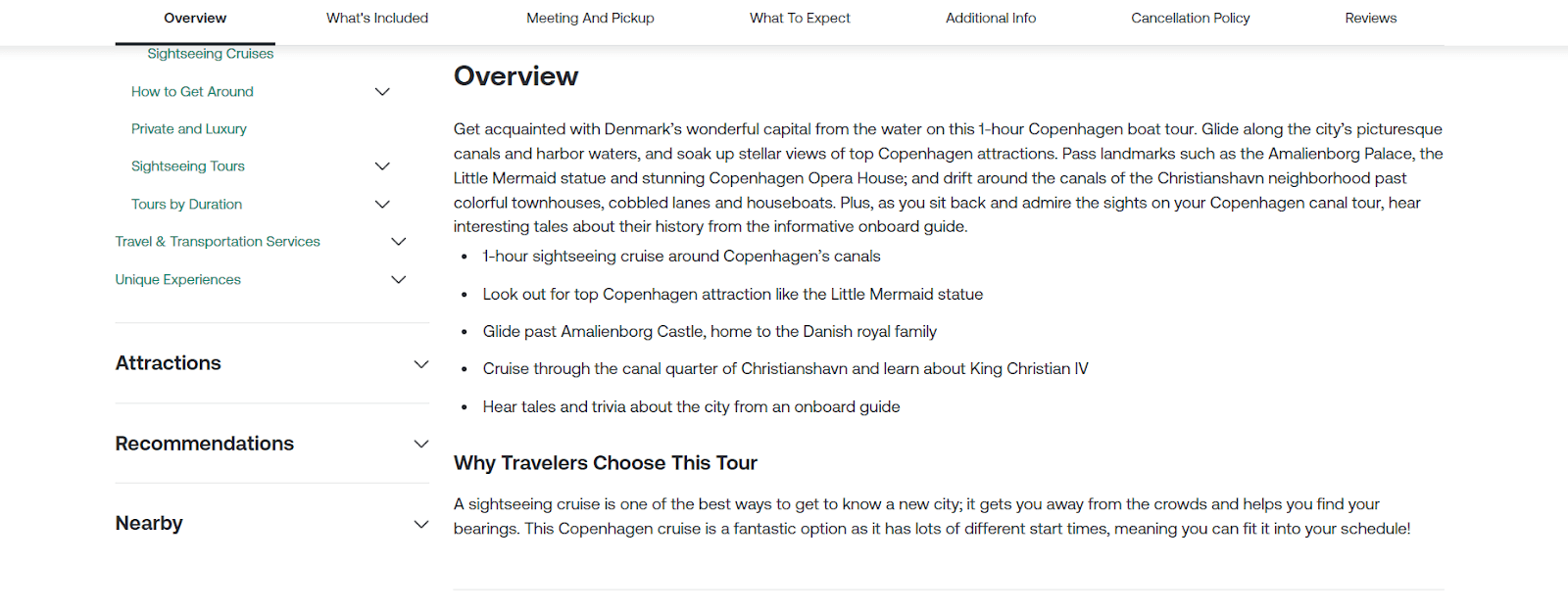
Another step for writing a tour description is to describe the experience of the tour. This is where you use sensory language to describe the tour’s sights, sounds and smells. It will make your readers feel like they are there with you.
You should also include any special activities or experiences unique to your tour . They will show how they will enhance your customers’ enjoyment and satisfaction. For example, suppose your tour includes a wine-tasting session. In that case, you can describe how your customers will savor the flavors and aromas of different wines. And mention learning about the history and culture of wine-making.
By describing the experience of the tour, you will create a more immersive and memorable impression on your readers, and make them want to join your tour.
Share Background and Historical Information
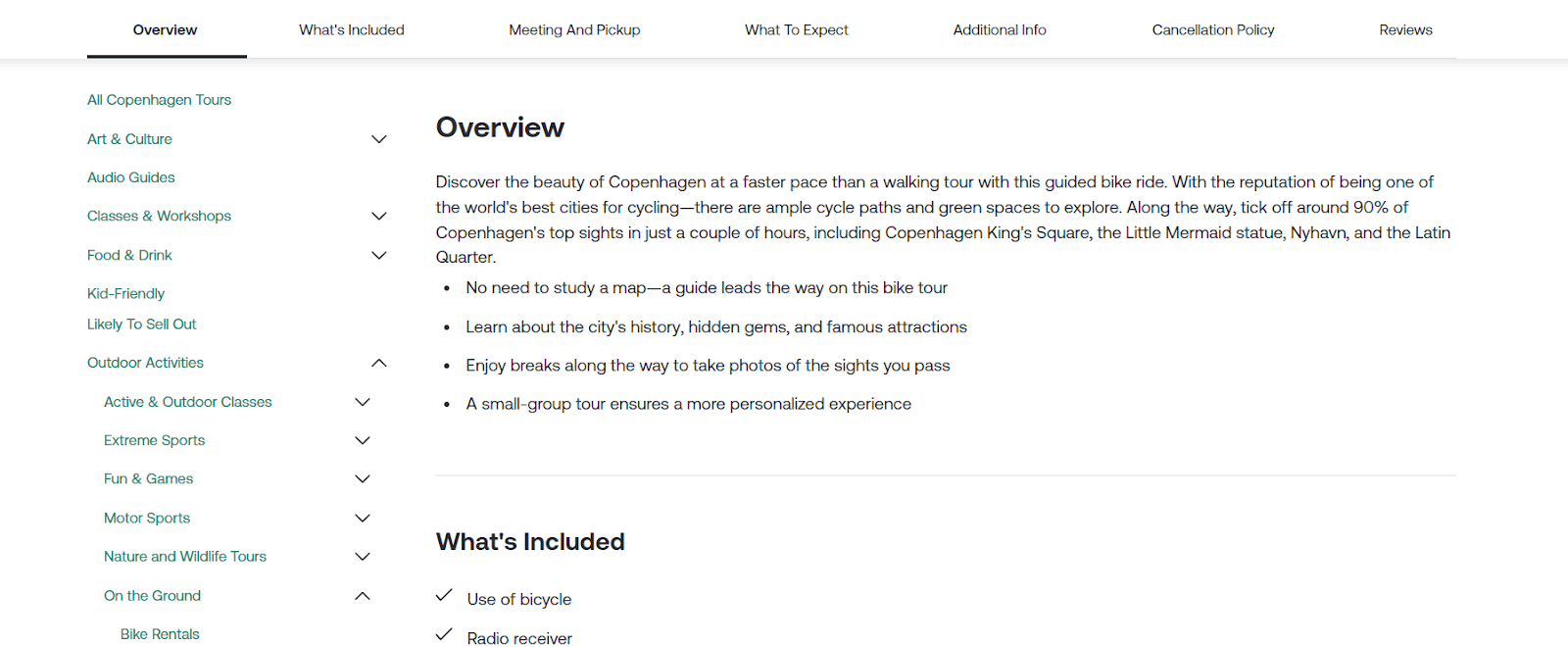
The next step is to share some background and historical information about the destinations visited on the tour. This is where you provide interesting facts or historical background about the places and landmarks you will see on your tour and show how they relate to the theme or purpose of your tour.
You should also use storytelling techniques to engage the reader and make the tour come alive. For example, if your tour is about the French Revolution, you can tell stories about the events and people that shaped the history of France, and how they influenced the architecture and culture of Paris.
By sharing background and historical information, you will add more depth and context to your tour description, making it more informative and educational for your readers.
Use Attention-Grabbing Headlines and Bullet Points
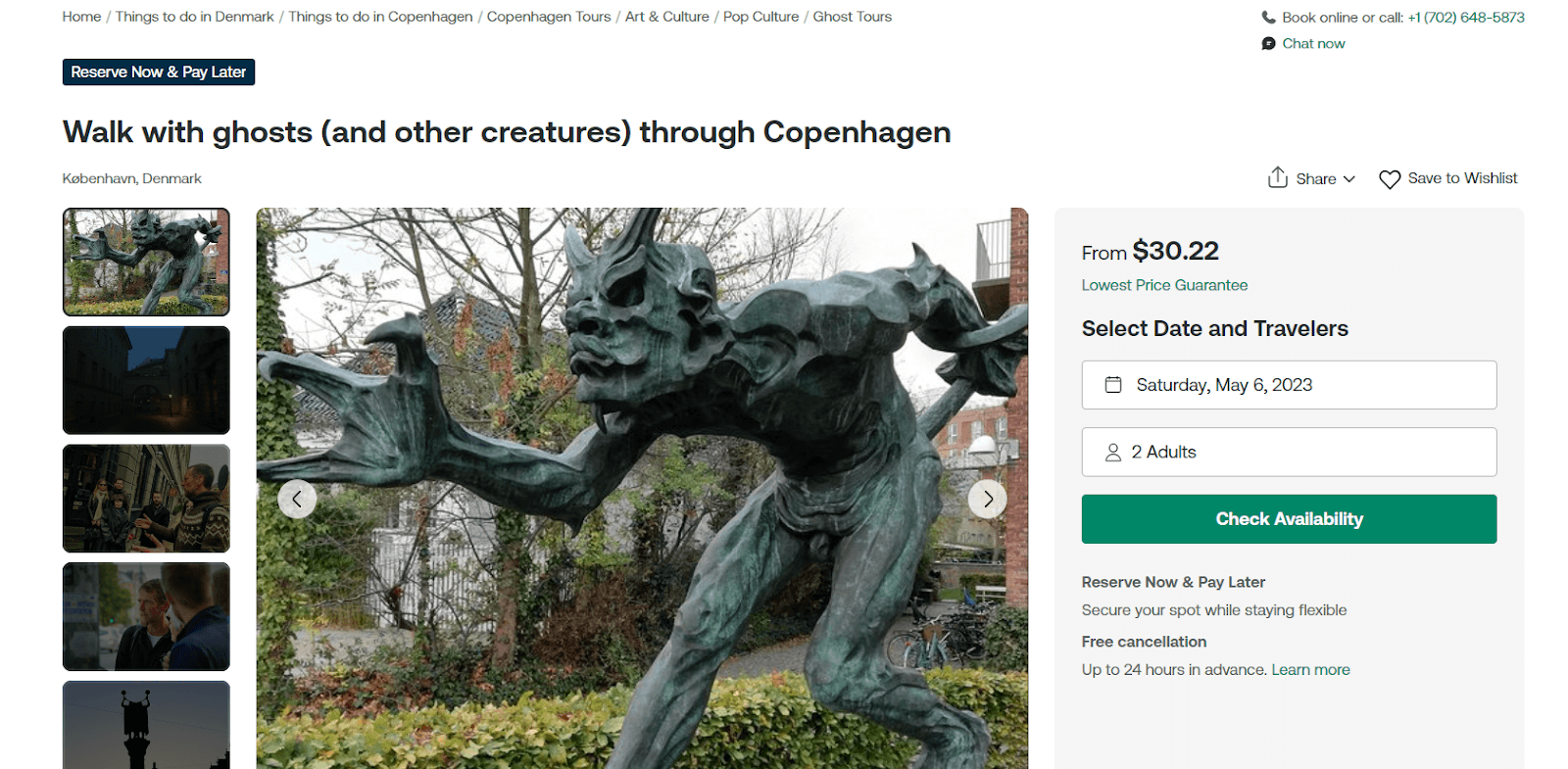
One of the most important steps for writing a tour description is to use attention-grabbing headlines and subheadings to break up the text and make it easier to read. Use headlines and subheadings that capture the main idea or benefit of each section, and make the reader curious and interested to read more.
You should also use bullet points to highlight your tour’s important features or selling points, and make them stand out from the rest of the text. Bullet points are a great way to summarize your tour’s key information and benefits. They will make them more visible and memorable for your readers. For example, you can use bullet points to list your tour’s main attractions, activities, or inclusions and show why they are worth booking.
Add Photos and Videos
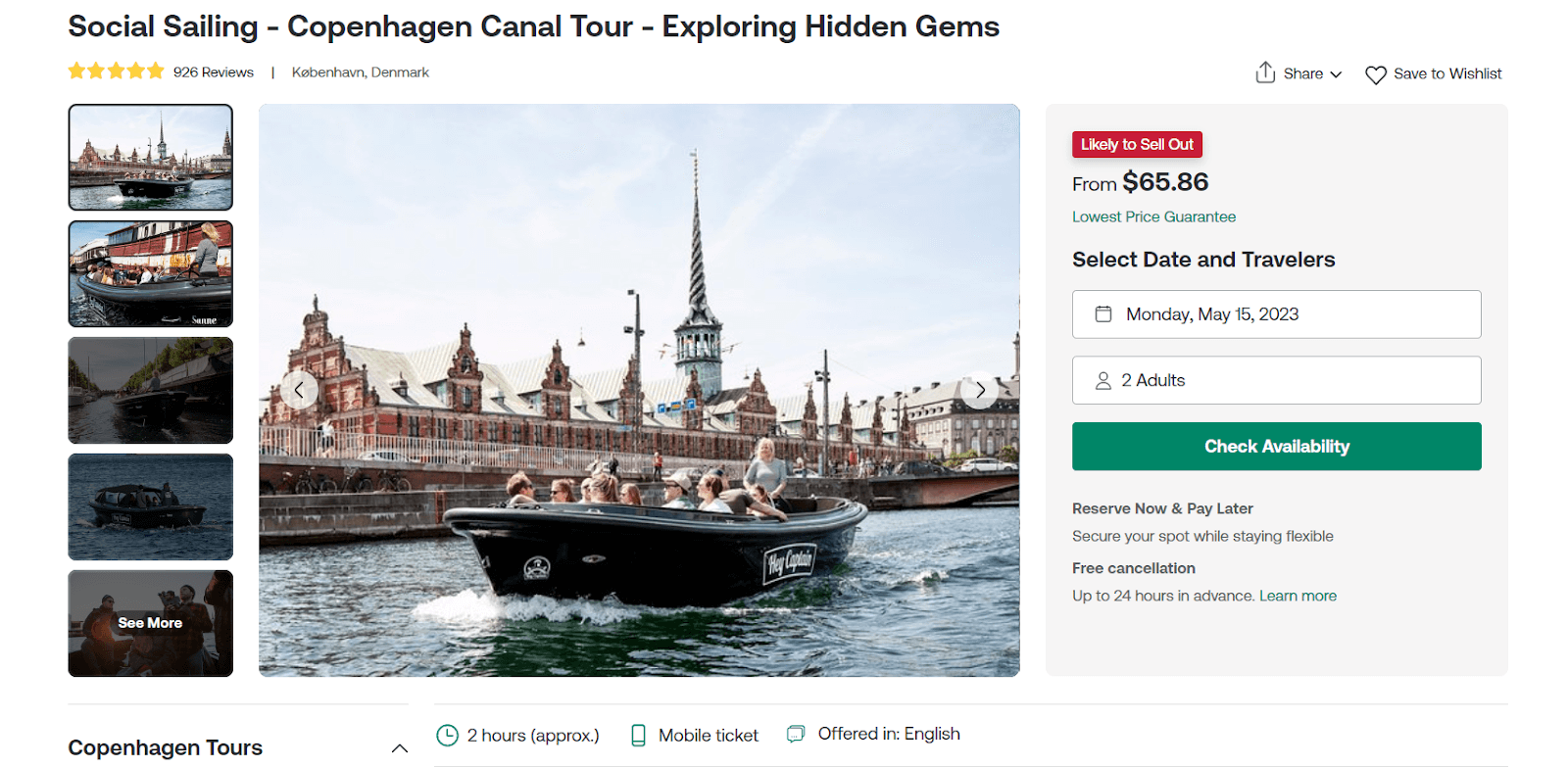
The final crucial step for writing a tour description is to add high-quality photos and videos of the tour destinations and activities . Photos and videos help complement your written descriptions. They will give the reader a better sense of what to expect. They can also help you showcase the beauty and diversity of your tour locations and create a more emotional appeal for your readers.
You should use photos and videos that are relevant, clear, and attractive and that match the tone and style of your tour description. You should also use captions or descriptions to explain what the photos and videos show and how they relate to your tour. Adding photos and videos will make your tour description more visual and engaging and increase your chances of converting your readers into customers.
Are you ready to take your travel website to the next level? Harness the power of SEO and captivate your audience with compelling tour descriptions. Unlock the secrets of effective copywriting and drive more traffic to your website. With the “how to write the tour description” guide, tailored specifically for the TravelerWP WordPress travel theme , you’ll discover expert techniques to optimize your tour descriptions for search engines and entice potential customers.
Don’t miss out on this opportunity to boost your online presence and maximize your bookings. Get your copy now and start crafting irresistible tour descriptions that will make your travel business soar!
Example Tour Description
To help you understand how to write a tour description better, here is an example tour description from Paris City Vision, a leading tour operator in France. The tour description is for a 1-day Big Bus Paris hop-on hop-off tour , allowing you to explore Paris at your own pace and see the city’s main attractions. (For more detail, please open the link to read the full description.)
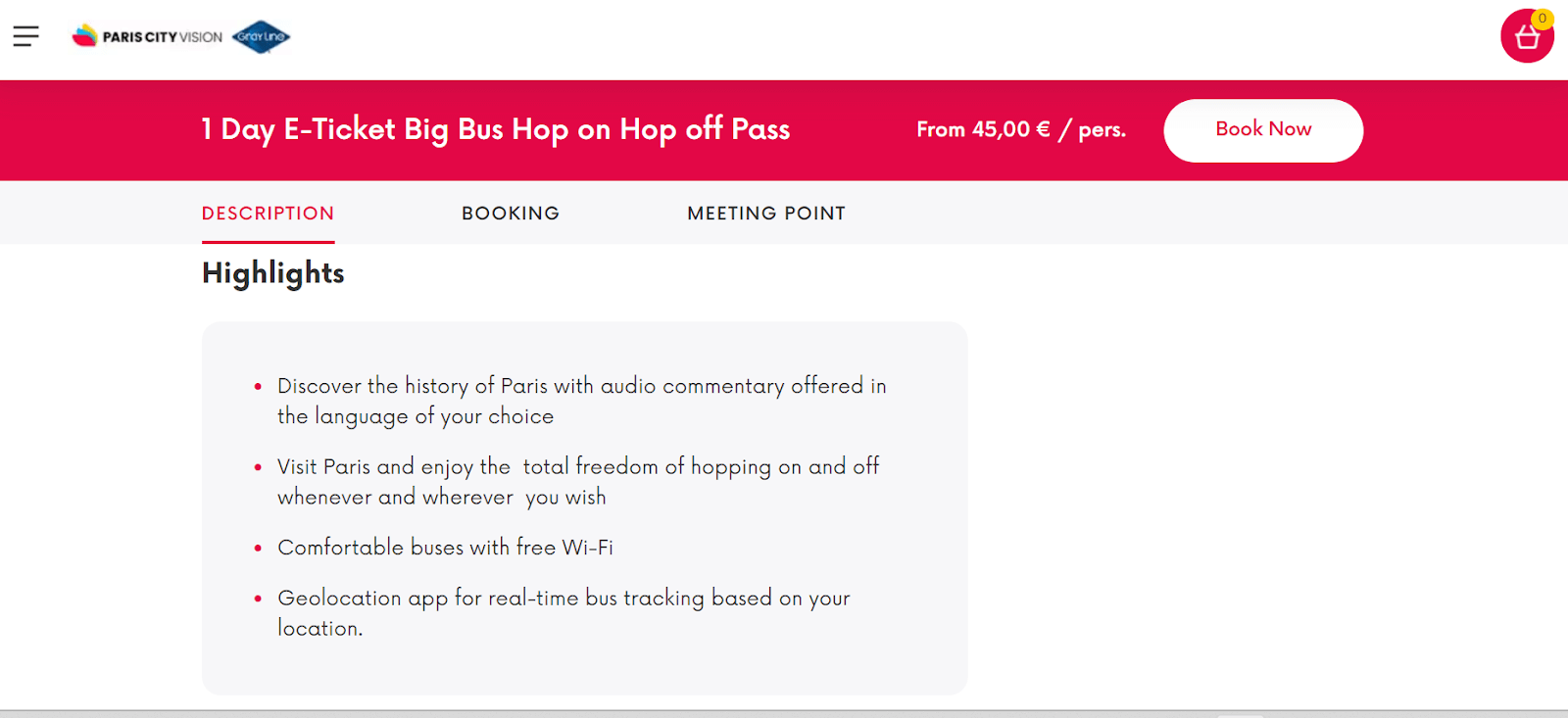
The tour description for the Big Bus Paris 1-day tour is a good example of how to write a tour description that is clear, concise, and informative. It does a great job of using attention-grabbing headlines and bullet points to break up the text. It also highlights the main features and benefits of the tour.
Plus, it has photos and videos of the tour destinations and activities, which make the tour description more visual and engaging. This will give the reader a better sense of what to expect.
However, there are some areas where the tour description could be improved:
1. For example, it could determine the tour’s purpose and decide on the target audience. This would help the tour description to focus on the most relevant and appealing aspects of the tour and use the right tone and language to connect with the reader.
For instance, if the target audience is young travelers who are looking for a fun and flexible way to explore Paris, the tour description could use a more casual and enthusiastic tone. In this case, it should emphasize how the hop-on hop-off tour allows them to customize their itinerary and see the sights they want to see.
2. It could also describe the tour experience and share some background and historical information about the destinations visited on the tour. This would make the tour description more vivid and engaging and create a more emotional appeal for the reader.
For example, it could use sensory language to describe Paris’s sights, sounds, and smells and include interesting facts or stories about the places and landmarks they will see on tour.
3. It could also add a call to action at the end of the tour description, encouraging the reader to book the tour.
For example, it could say, “Don’t miss this opportunity to discover Paris at your own pace and according to your schedule. Book your Big Bus Paris 1-day tour now and prepare for an unforgettable adventure!”
Tour descriptions are powerful instruments to persuade potential tour customers. In this article, we hope you learned how to write effective tour descriptions that attract and convert your readers.
We instructed you on determining your tour’s purpose and target audience, highlighting the tour itinerary, describing the experience, sharing the background and historical information, using attention-grabbing headlines and bullet points, and adding photos and videos. You also saw an example tour description that applied these steps, and an analysis of how it could be improved.
By following these steps, you can write tour descriptions that sell, and boost your conversions and sales. Thank you for reading this article, and happy writing!

Unleash The Full Potential of Your Travel Agency Website with Traveler
- NEW VERSION 3.1.1 – Upsell and Trust Badges For Partner by traveler 16/11/2023
- How to Increase Bookings for Your B&B? by traveler 13/09/2023
- NEW VERSION 3.1.0 – New Update Solo Tour Demo, Mega Menu, Upsell Power and Trust Badges by traveler 11/09/2023
- How To Optimize Blog Content for Your Bed & Breakfast Business? by traveler 10/09/2023
- Top 5 Ways to Advertise Your Bed and Breakfast Business by traveler 10/09/2023
Related Posts
How to increase bookings for your b&b, how to optimize blog content for your bed & breakfast business, top 5 ways to advertise your bed and breakfast business.
- Privacy Policy
- Support Policy
- Refund policy
- Term and Conditions
Traveler design by ShineCommerce © All rights reserved
9 tips for writing the perfect tour description for your travel business

By Rezdy — 26 Aug 2018
copywriting tour description
Updated December 2021 – While surfing the web, travelers are often bombarded with information about any given destination. A quick Google search of “things to do in Sydney” or “things to do in New York” for example, will yield thousands of results, and it can quickly become overwhelming. In your tour business, your goal is to attract potential customers to your website and subsequently convert them into paying guests who attend your experience. By typing up the perfect description of tours and travels your business offers, it will help in helping customers during their decision-making process
By writing a compelling and engaging tour description within your business, you’ll be able to increase your bookings in no time. All while creating a personal connection with your customers. In this article, we’ve detailed out 9 key tips to remember when writing a tour description. By following these tips, you’ll be able to convey your message even clearer and convince customers to book through you.
9 tips for writing the perfect description for tours and travels
So, let’s find out what the 9 key tips are for writing the perfect tour description.
1. Find your Unique Selling Proposition (USP)

Competition is only natural within the experiences industry. With so many other businesses providing similar tours and activities, it’s sometimes hard to stand out from your competitors. On the other hand, having so many similar options available at once may be overwhelming for many customers. Most of the time, customers want to quickly understand what makes one service different from the others. Having a clear differentiation, allows them to make a swift and efficient booking.
You can help your customers by promoting your business’s unique selling proposition.
Unique selling proposition (USP) is a term used in marketing that indicates specialties your business offers that make you stand out from your competition. By having a unique selling proposition, you’re able to leverage your business by giving customers an experience they won’t be able to find elsewhere.
Your USP should showcase your strengths and advantages effectively, however, your USP should be uniquely valuable for your customers. By simply being “unique” won’t add that valuable element your customers seek. You have to differentiate around some aspect your target audience cares about, otherwise your messaging won’t be nearly as effective.
A compelling USP is:
- Flaunted with evidence: Simply stating that your tours are “heaps of fun” may work for a few people, but proving and showing evidence that your activities are heaps more fun than your competitors will most likely capture bookings. You can achieve this by showcasing your reviews, adding quality photos and videos, and writing an engaging tour description.
- Customer-focused: Promoting your USP won’t be effective if it doesn’t align with your customer’s value. Try to perform surveys and research your target audience to find out what their values are. Whether that be price-focused, social issues, or flexibility, finding out what your customers value, will help you find your USP.
- Featured in the fine print: While taglines may be one way to communicate your USP, your USP should also be reflected in all areas of our business. Feature it within your policies, your “About Us” page, your descriptions, and more.
2. Find a persona for your tour description
Target a specific persona before you begin writing. For example, if you are a company that provides kayak tours to experienced adventurers, then develop a persona that addresses your target audience. It might be an open-minded person who has the necessary skills to kayak and enjoys the thrill of a new experience. You need to think about who will most likely book your tour business, think about your ideal customers, and break up the details of your tour description for a persona that identifies with that audience.
3. Make an easy to read description for tours and travels
Make sure your tour description is easy to read by:
- Avoiding long, wordy sentences that can be cumbersome;
- Making every word count, and choosing powerful action verbs to describe the experience;
- Instead of writing a paragraph about each tour that you offer, create several bullet points. Bullet points are easier to scan through and will allow you to keep your reader’s attention.
4. Tone of Voice
Choose a tone of voice, and remain consistent throughout your website. Some tour operators want to maintain a corporate presence, and therefore should adopt a professional tone of voice . A smaller, local business might be more interested in connecting with their customers on a personal level. They may choose to use description styles with a tone of voice that is light-hearted with a dash of humor. Either way, a consistent tone of voice is key to telling your story.

5. Be persuasive yet straight to the point
Be sure to outline the benefits of booking with your activity experience. If your business focuses on winery tours in the local wine-growing region, then be sure to explain what each unique offering is about. Avoid vague descriptions such as “Our day-long wine tour takes you to several wineries in the area.” Instead, provide additional details and throw in the benefits of booking this tour: “Our 8-hour wine tour takes you to 5 different local wineries, where you will sample delectable wines and snack on delicious cheese.”
6. Don’t share too many straight away
Being bombarded by the endless options of tours and activities your business offers may be too overwhelming for many customers. Not only that, it distracts your customers from the experiences they’re really after and as a result, may lead them not to follow through with the booking.
Likewise, strategically designing your website so that customers aren’t bombarded with options would be the best move. An effective method is to segregate the different tours and activities into categories. For example, if you’re a water sports operator that offers an array of different water activities for singles, couples, groups, and families, it’s best to select the top 4 to 6 activities for each audience and expand on it. By categorizing your activities, people will find it easier to navigate through your website and will be able to read a detailed description of each activity. Don’t forget to add photos and videos to complement the description.
7. Optimize your content
Optimize your content with relevant keywords, but do so in a natural way. Keywords might include the activity you offer, the name of your city, and any phrases your customers might use while searching for activities. If you can place your keywords naturally in the copy, not only will it capture your highlights but it will quickly optimize your site for search engines too. You also can add keywords into subheadings and image file names to include additional keywords for SEO and therefore increase your rankings in the search results.
For more tips and tricks on how to optimize your website and content, click here .
8. Add photos and visuals to complement your tour description
It’s no secret that photos and visuals are an effective way to draw people’s attention. People love to view photos of tours they’re about to experience as it helps them visualize the tours and activities. Featuring quality photos and videos to your description for tours and travels will only help people visualize and envision the description they just read.
9. Check your grammar and spelling
Clear grammar and spelling don’t only help people read and understand your descriptions easier, but it also adds an element of professionalism to your brand. Poor grammar and spelling on your website may come across as unprofessional and sloppy. As a result, it may decrease your brand’s value within your customer’s eyes. This could lead to a loss of potential bookings. Having clear grammar and spelling allows people to put their trust in your business. It shows that you pay attention to detail, especially when your tours and activities require a high level of safety.
When writing your description for tours and travels , it’s recommended that you type it out with the help of an online grammar checker. Apps like Grammarly are a great tool to help you stay on top of your grammar and spelling.
Once you have mastered the art of writing a compelling tour description, you’ll see that you’ll have fewer inquiries. Clear descriptions reduce the chances of your customers asking for more details of a particular tour and activity. Ultimately, capturing more bookings.
Once you start capturing more bookings, the best thing you can do is invest in an online booking software . A software like Rezdy is specifically built for tour operators like you. It helps you easily manage bookings by showcasing real-time availability, automatically updating manifests, and allowing customers to make secure payments. At the same time, Rezdy also offers a one-click website builder that makes it easier for tour operators to edit and update their photos and descriptions.
Curious to see whether Rezdy is right for you? Start a FREE 21-day trial or book a free demo today.
If you enjoyed this article then make sure to follow the Rezdy blog . There are a lot of marketing tools and tour operator tips designed with businesses like yours in mind.
Start free trial
Enjoy 21 days to take a look around and see if we are a good fit for your business.
No obligations, no catches, no limits, nada

What's In a Compelling Tour Description?
- Sales & Bookings
So, you’re ready to go to market with your upcoming tour or retreat and want to put together an eye-catching booking page with WeTravel. Great timing, we have some tips for you on how to write a tour description that sells!
The write up is going to have to win over potential clients straight away, especially if they're new to your business. If it doesn't sound appealing, give enough information, or is badly written, chances are your Book Now button won't get as many hits. Also, it's not likely that anyone will return to visit the web page or link again.
Download FREE eBook
The Ultimate Guide To Scaling Your Tour Operator Business
A 150-page guide that covers everything from establishing a winning travel brand to delivering a market-leading service

How To Write A Tour Description That Sells
As your tour description is essentially marketing content, it needs to lay out the land and explain the unique purpose and selling points of your trip. When travelers read it, they should be able to get a feel for the tour and have enough information to compel them into booking their spot.
Now, as we mentioned, it is especially critical to get this right if you’re planning on selling trip spaces to people who don’t know you or haven’t booked through your travel company before. While you may be afforded more grace by travelers who know you personally and trust you, the same can’t be said for those who don’t.
Here are some ideas on how to tackle your tour description to engage travelers with compelling and well-formatted copy.
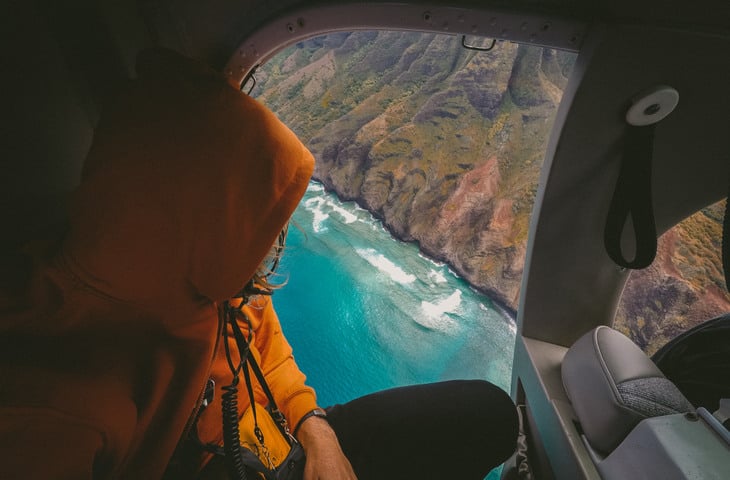
Write With Your Target Client In Mind
Think about exactly who it is you want to lead on your tour or retreat. Are you looking to target beginner or advanced yoga students, the health-conscious traveler, busy professionals who need a break to disconnect, etc?
Once you know who these people are, write your tour description using language, images, tone, and length that speaks to them in particular.
Know What’s Great About Your Tour, And Include It In The Description
You know what makes your tour or travel experience great - write it down and include it in the description. Potential clients are going to want to know what makes yours stand out from the rest, so be sure to answer that directly in the copy.
If you have video footage from previous trips, be sure to post this onto your booking page as well. Being able to visualize the experience as well helps travelers to get a clearer view of what they will be in for.

Include Keywords For SEO
Identifying and including keywords naturally into your tour description will help potential clients find it online . It will also let them know at a glance what your travel experience is about.
For example, if you are offering a Pilgrimage to India or Foundational Yoga Teacher Training , use these in the tour headline, sub-headings, images, and throughout the text (without over-optimizing) so that it is clear what the experience is centered around.
Come Up With A Great Title
Even though you want your keyword to be in the tour title, it’s not to say you can’t jazz it up a bit.
Think about how you can take your unique selling points and use them in a way so as to share important features of the trip in the title. That said, be careful not to make a paragraph out of it – rather keep the title concise and catchy.
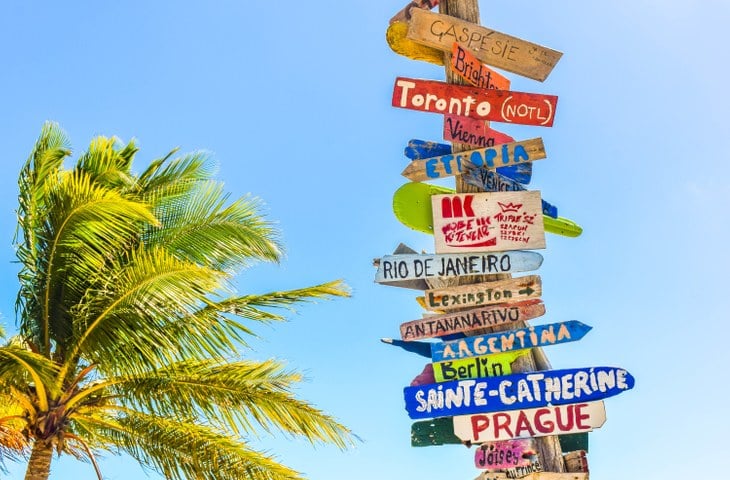
Keep The Description Engaging And To The Point
In the main tour description, you want to include as much information as you can to help travelers make an informed decision. However, you need to find the line between writing a book about it, and being helpful and informative in what you include.
It's always worth spending a bit more time on your introduction. Be sure to include the important highlights in easily digestible copy. This will be the point where travelers decide whether or not to continue reading.
As you go along, consider whether the person reading the copy will find the information you provide useful for their decision. If not, leave it out or include it in a more detailed downloadable brochure that can be accessed on request.
Overall, be specific about the benefits of booking with your company. Highlight the value that the traveler will receive and write it in a way that makes the opportunity impossible for them to turn down.
Also, keep your writing to short, easy to read sentences. The longer they are, the more difficult they can be to take in, and you risk losing the reader's attention.

Layout The Highlights
Some people like to include this section at the beginning of the tour description. Others towards the end. Whatever your choice, use it to provide easily skimmable bullet points that layout the highlights of your tour.
At a glance, these should identify what potential clients can expect without them having to read the entire tour description.
Show What’s Included and What’s Not
It’s always good to let travelers know right away what the inclusions and exclusions of a tour are. This could be airport transfers, travel insurance, meals, tips, tourism taxes, etc.
Clarifying these points will help to avoid any confusion or disappointment further down the line when you are more deeply rooted in the organizational process.
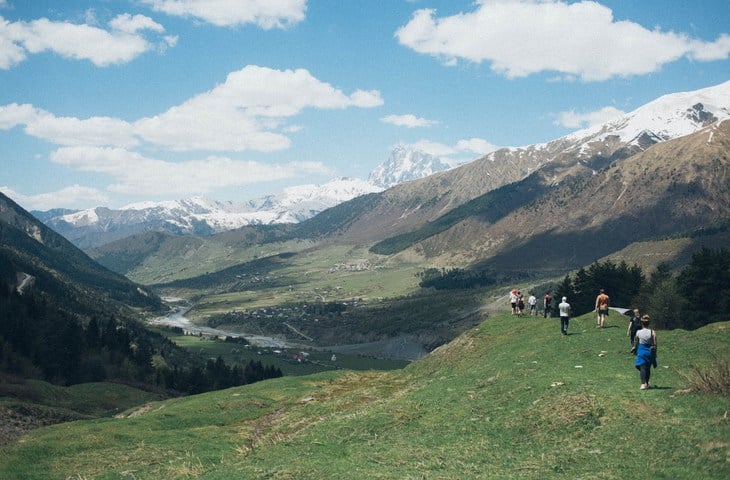
Don’t Forget Images
Earlier, we mentioned adding in video to your tour description. However, even if you don't have video footage, you need to add some great photos at the very least. They are, and always have been, a marketing tool to engage and attract potential clients to your tour. With eye-catching images, your chances of landing a booking increase substantially.
Final Thoughts
Failing to write a compelling tour description can lead to you not selling spaces on it. You know that you provide a life-changing experience, you just need to get that message across to potential clients as well. Knowing how to write a tour description that sells is one way to do exactly that.
New resources, straight to your inbox
We’re committed to your privacy. WeTravel uses the information you provide to us to contact you about our relevant content, products, and services. You may unsubscribe at any time.
About the author

Related Posts
Pricing and payment: what's sustainability got to do with it, 7 reasons why your travel website could be losing bookings, what's the deal with retreat waivers.
- Join Us for: ◆ Arival 360 | San Diego 2024, 30 Sep - 3 Oct 2024 ◆ Arival 360 | Valencia 2025, 28-30 Apr 2025 ◆
- 2 May 2024 Insider Pro Meetup - A Job Well Done – Get Started Selling Corporate Tours 30 Sep - 3 Oct 2024 Arival 360 | San Diego 2024 23-25 Nov 2024 Arival | Activate Edinburgh 2024 28-30 April 2025 Arival 360 | Valencia 2025
- All Events >
- US & Europe Traveler Trends Webinar: Insights for a Successful Summer The Attractions Forum @ Arival 360 | Berlin 2024 Arival 360 | Berlin 2024 Insider Pro Meetup - Strategies to Scale Insider Pro Meetup - Operator Spotlight UKinbound Webinar | The US Consumer
- Arival Spotlight Awards
- Arival TourReview Spotlight Awards
- Introducing Spotlight Awards
- TOURREVIEW SPOTLIGHT WINNERS ORLANDO 2023
- METHODOLOGY
- TOURREVIEW SPOTLIGHT AWARDS FAQS
- Arival Spotlight Winners
- Arival Spotlight Submissions
- Spotlight FAQ
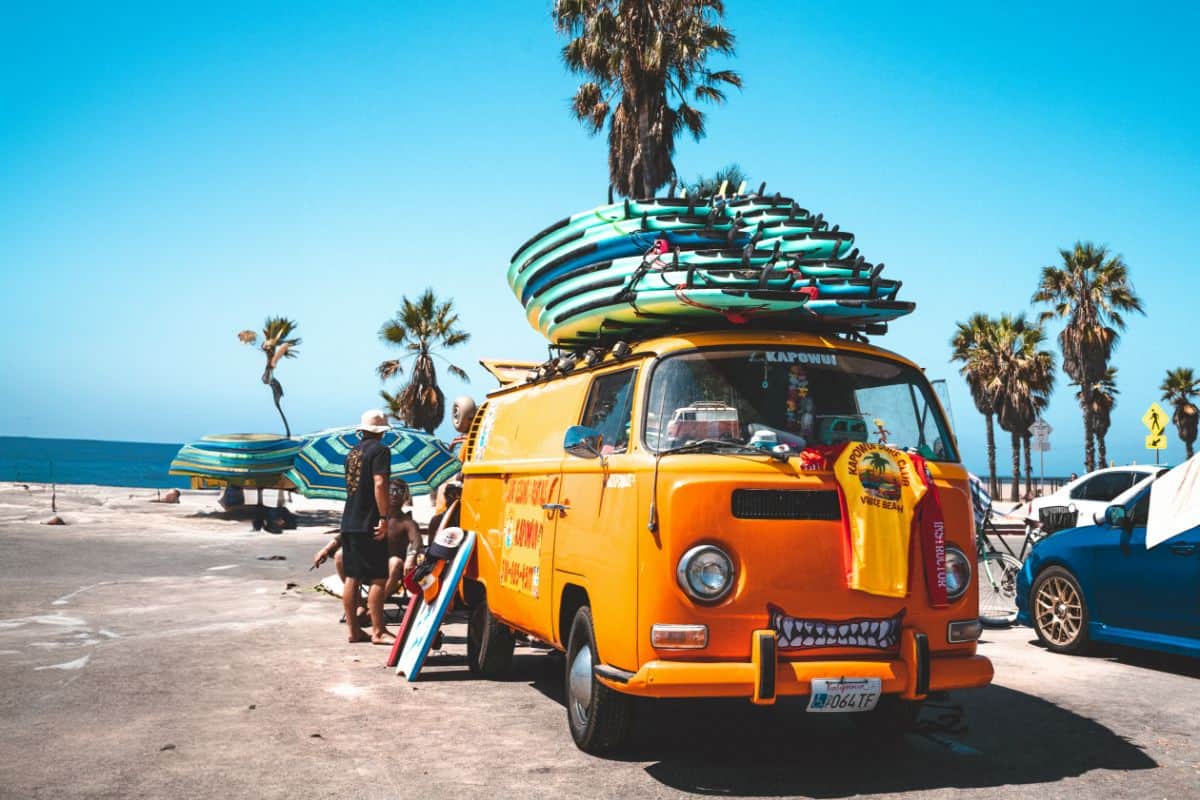
ARIVAL 360 | SAN DIEGO
30 september – 3 october 2024.
Insider Pro Access Members save 20%
THE event of the year for solutions-focused in-destination experience creators and sellers
Save up to $660 with the Spring Savings ticket
- Tour Guide Training: The Best Tips & Tools for Your Guides Take Part in Our Global Operator Survey Viator’s Ben Drew Reflects on Leadership Journey Google on Gemini AI, Trip Planning and Recommending Things To Do
- Distribution
- Operator Stories
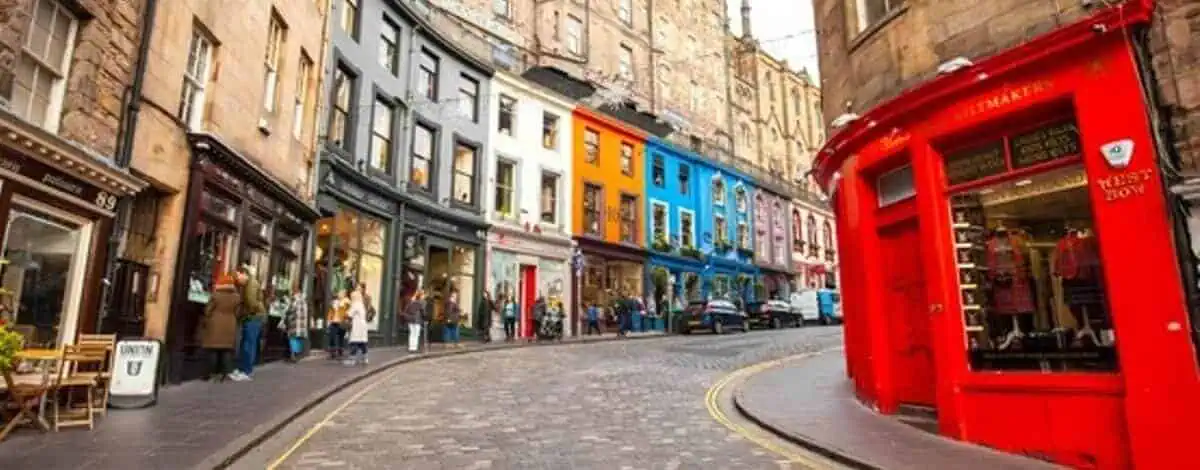
ARIVAL ACTIVATE | EDINBURGH 2024
23-25 november 2024.
THE event of the year for the European in-destination experiences industry
Save up to £440 with the Super Early Bird ticket
- Arival Guide to AI in Experiences The Power of Events: How Sports and Performing Arts Drive Tourism The 2024 U.S. Tour Taker The 2024 Experiences Traveler Outlook
- AI in Experiences: Case Studies in Emerging Tech The Outdoor Adventure & Activities Traveler REPORT SERIES: The 2024 U.S. Experiences Traveler
- Search All >
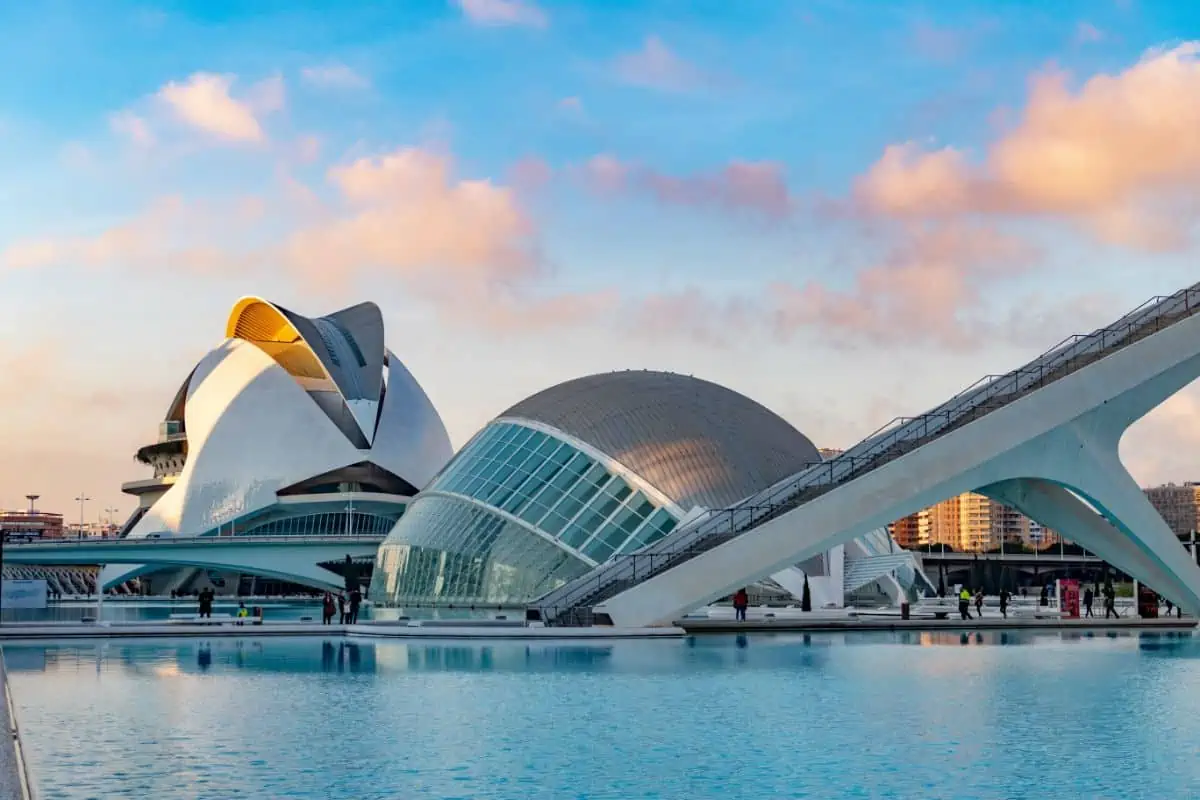
ARIVAL 360 | VALENCIA
28-30 APRIL 2025
SAVE UP TO €990 as an Insider Pro Access Member
- Marketing with Google
- Culinary Experiences Guide
- Arival Booking System Guide
- How to Choose a Booking System | CHECKLISTS
- Insider Pro Access membership
- Insider Free membership
- Special Offers
- Arival ProShield Insurance
- Employers Dashboard
- Job Board – Post A Job
- Search Our Talent Pool
- Job Seeker Dashboard
- Join Our Talent Pool
- Job Resources
- Tour Guides & Directors
- In-destination Specialty Career
- Marketing & PR
- Operations & Logistics
- Water & Theme Parks
- All Job Categories >
- Join Arival Insiders Free
- Subscriptions
- Group Subscriptions
- Members FAQ
7 Key Steps to Write Great Tour Descriptions that Convert
Writing tour descriptions that convert is science more than an art. So what do you include and how do you run the process efficiently? We spoke to Kate Cornell to find out

by Ben Finch | 3 May 2022
Writing tour descriptions to sell experiences through an online travel agency is a tough job. There’s not much space to fill in all the required information or to use flowery, descriptive language. On top of that, there are so many descriptions spread across the OTAs that it can be a headache to keep them all updated.
We spoke to Kate Cornell , head of Content & Curation at Holibob and previously with TourismSolved and Viator , to detail the steps required to write a great tour description. “We have only an hour together,” she says.
Balance Creative Storytelling with Factual Details

Travelers need to know the details of what they are going to see. That means that a tour description needs to have logistics — what are your guests going to see? How long is it? Could elderly or disabled people have difficulty? Is it age-appropriate for children?
“You can write all about the Louvre,” Cornell says. “You can write all about walking around Paris and wax poetic about it. But people need the nuts and bolts about what the tour really accomplishes. These details have to be really thought out when you’re writing these descriptions.
“Be really to the point about your experience on an OTA and then leave the more passionate personal language for your own website.”
Potential Customers Don’t Care About Who You Are

It’s unfortunate, but when on an OTA site, potential guests aren’t looking for details about the operator. They want to know what they are going to get and will use reviews to determine quality. For operators, that means getting straight to the point, and leaving out the awards and years of experience. Use it all on your own website.
Insider Pro Access Members Save 20%
Cornell says: “There’s no outlet for an operator in that particular use case to elaborate on that. What we learned through tons of user research at Viator is that people don’t care necessarily who the operator is on an OTA site, they care about the experience they’re gonna get.”
However, do make sure that if you have a unique offer — such as guides who are experts in their field or are embedded in the community — that this is included.
Research Competitors’ Content

Examining what is already performing well on an OTA is an excellent step in creating great descriptions. Look at those in your location with plenty of great reviews and work out how they’re writing to convert. Remember that everyone in your location on an OTA is your competitor, not just those that run similar experiences.
“You don’t have to spend hours doing it,” Cornell says. “But you should look and see that they’ve included this information on their product and they have X number of reviews. So they’re doing something right. You can also see if you take people to places that other tours don’t.”
The OTAs Will Guide You

Whether you enter your descriptions through an extranet or through an API on an OTA, they are trying to give you the space you need to sell a tour. Different pieces of information and data are required and described by the OTA. Use these to guide you and take them seriously.
Cornell says: “Something I always encourage operators to do is to use those structured data fields as your friend. Not only is that important booking information, but now a lot of these OTAs are offering you ways to tag or attribute your content.
“If you’re going through that flow, make sure you take what you categorize your product as seriously as you take the itinerary stops that you can include and what you will see. Those are things that over time are going to minimize the amount of work that you have to do to update your product.”
Reviews are the Best Data You Have

Your reviews show you what people like and what they don’t. These can be used to improve your experience, but should also be put to work improving your sales content in every location it’s published. Cornell says: “Use your reviews as source of truth to understand how you can you improve the content of the page of your tour
Keep Your Descriptions Uniform

The most efficient way to write experience descriptions for placement across multiple locations is to keep them uniform. This minimizes the amount of work required to update them as changes are made.
“Make that description pretty uniform so that you can transfer it across multiple points of sale,” Cornell says. “If you are advertising on Viator or GetYourGuide , Expedia , Airbnb , wherever you are putting your content, once you change it in one place, remember to change it in all those places. The big lesson here is: when you’re putting content up on a third-party site, always be as uniform and structured with that content as you can.
30 September – 3 October 2024
THE event of the year for solutions-focused In-Destination Experience creators and sellers
“You have to think about how you manage your content efficiently. Ultimately, if somebody does book your product and it is not what was advertised when they booked — all the information they received about where to meet or what to bring is not there — that could equal a bad review.”
Make Sure You Include all the Information Guests Require

Currently, the constant change with Covid restrictions means that guests may need to bring a mask, proof of vaccination, or not. Make sure this is always in line with local guidelines.
However, there are other aspects that can be forgotten about. For example, Cornell says: “What to wear, what kind of shoes to wear. If you’re going to be walking a lot, you don’t want people showing up in high heels.
“A big one we saw that people often forget is on the food aspects of tours — making sure that people understand if you have dietary restrictions. Include that information. Mobility has always been the biggest one. People would call customer service at Viator and say, ‘I have a wheelchair, can I take my wheelchair?’
“Put yourself in the shoes of the traveler. What questions would you have going into the tour? Should I be there 15 minutes early? Should I wear a jacket?
“Always be explicit in what you can or can’t offer to the customer. In the end, it may result in a booking but it also avoids a lot of trouble down the line.”
Sign up to receive insights tailored for the in-destination industry as well as updates on Arival.

Take Part in Our Global Operator Survey

Viator’s Ben Drew Reflects on Leadership Journey

Google on Gemini AI, Trip Planning and Recommending Things To Do

What Travelers Want in 2024: Webinar
Already a member.
Username or Email
Remember me
Lost your password?

NEED TO REGISTER?
Included in Free Membership
Included in Arival Pro Membership
The Arival on-demand video library archive Access to the entire library of over 150 video sessions and webinars
Arival.guides Short, digestible research & trends reports delivering insights into our industry, such as The Tour Operator Outlook for 2021.
Arival.travel articles Topical articles about marketing, tech, operator business and operator stories in all areas of tours, activities & attractions & experiences
Job board access Find a job from our regular listings, post a resume to the talent network and learn strategies from the job resources articles
New webinars Helpful, instructional sessions covering subjects such as Mastering Facebook Ads, Grow Your Business and How To Work With OTAs — topics to help advance your business.
Discounts on all Arival in-person events 20% Discount on all Arival in-person events (save up to $300)* based on business type
Arival ProShield – Insurance program Access to tailored insurance solutions by Granite Insurance is available exclusively for Arival Insider Pro Access Members. Insider Pro Access Members also have access to a suite of resources from Granite Insurance including templates, forms and other informative documents.
Insiders Pro Access member exclusive webinars Paid membership-only webinars to deepen your understanding of important industry topics.
Job postings & talent directory Post jobs & connect with candidates most applicable to your business.
Private roundtables to connect, learn and engage Small, focused and intimate discussions exclusive to Arival Insider Pro Access members.
Full access to Arival’s library of in-depth reports Up to date, deep analysis of tourism topics ranging from Self-guided Tours to Sales & Distribution Trends and Outlooks, based on the data that defines the industry.
The latest on-demand videos Over 350+ on-demand videos featuring hot topics in tours, activities & attractions
Insider discounts in digital marketing, tech, e-learning, and more Save money on additional tools, services and learnings you need to run your business. Exclusive to paid members.

At Arival, we believe travel can make the world a better place. Our mission is to establish and inspire a diverse community of individuals and companies in the In-destination Industry by providing opportunities to gain insight, share knowledge and build connections. To make it possible for true collaboration, creativity, innovation, and idea exchange to thrive, we are committed to facilitating a welcoming and respectful community for all. This Conference Code of Conduct shares our community expectations and applies to all attendees, employees, exhibitors, speakers, sponsors, volunteers, and other participants at Arival- produced and sponsored events. We empower all participants in our community to actively engage in creating a friendly, inclusive and safe environment for all.
Arival’s core values include the following, and create an expectation for conduct at our events and in online community spaces:
We demonstrate a deep respect for human beings inside and outside our company and for the communities in which they live. We value integrity and strive to consistently interact with others in ways that are authentic, ethical, and fair. We are dedicated to transparency , committing to clear, open and honest communication. We actively pursue and advocate for inclusion, diversity and representation of varying cultural backgrounds, perspectives and ideas
Arival welcomes people from all cultural backgrounds, and does not discriminate on the basis of race, color, creed, gender (including pregnancy, perceived pregnancy, childbirth, breastfeeding, or related medical conditions), gender identity, religion (including religious dress and grooming), marital status, domestic partner status, genetic information, age, national origin or ancestry, military or veteran status, sexual orientation, physical or mental disability, or any other basis protected by federal, state, or local laws.
Accordingly, participants must refrain from displaying any demeaning, harassing, aggressive, or intimidating behavior or materials that would interfere with others’ experience and participation in our community.
If you witness or are subjected to inappropriate or disruptive behavior or have any other concerns, notify an Arival staff member as soon as possible.
Inappropriate or disruptive behavior will not be tolerated. Arival reserves the right to refuse entry to or remove any party from any event or community space at any time when participation or behavior create a disruption or hinder the event or enjoyment of the event by other participants. All determinations are at the sole discretion of Arival, and the decision of the Arival team will be final. Severe breaches of this Conference Code of Conduct may result in disqualification from participating in future events. Individuals expelled due to violating this Conference Code of Conduct will not be eligible for a refund or other consolation.
If you have questions regarding this Conference Code of Conduct or its implementation, please contact us at [email protected] .
Privacy Overview
Tour description: What convinces travelers the most?

It’s so crucial to have the best tour description possible: it will bring you more bookings and will also draw a better picture of the reality of your tour , so that it matches travelers’ expectations. In this post, you will learn, step by step, how to write the best description of your guruwalk: let’s go!

If you don’t know how to get to the tour edition section, we made a post about it here .
Structure and content
Try to write the description of your guruwalk with the following structure.
1. Introduce your tour
This part is the most important one . You must hook travelers to keep reading. You have to sell your tour , in just a paragraph.
Answer the following: Why is my tour the best in the city? What am I going to show to travelers or what am I going to tell them, and in which way?
Here you have to open the travelers’ curiosity .
Moreover, think about what travelers want from a tour and put it in your description.
Ex: we will go on a slow pace, without stress, we will have fun, with a small group, there will be time to take pictures, it will be a fun experience, this tour is designed for everyone (families and retired people included), they will have the best recommendations to know what do after the tour and where to go to eat …, etc.
Good introduction examples
Arthur in Kampala, Uganda.

Christine in Florence, Italy.

Donkey Tours in Barcelona, Spain.

2. List of places
After a good introduction, you should put the main stops of your guruwalk , so that travelers can get an idea of what they are going to see.
This list can indeed convince travelers to book as they could have these sites on their list of things to see in your city .
It’s not necessary to put all the stops (especially those that are less known). Otherwise, it can make the tour description very long.
To continue opening curiosity, do not hesitate to end with words like ‘and many more things / curiosities / surprises / hidden gems / places that only locals know’.
However, if you think you need to put more details, put them. This way travelers will have better expectations.
You can write everything in a text, although it’s easier to read with bullet points.
Karla in Rome, Italy.

3. Invite travelers to join
After the list, you should continue selling your guruwalk . To close the tour description, we advise you to invite travelers to join the tour using one of the following formulas:
- “See you soon in X!”
- “Looking forward to meeting for you here in X”
- “Can’t wait to show you…”
- “Don’t miss this amazing opportunity to know… ”
- “If you want to learn and have fun in X, this guruwalk is for you!”
- “Join my tour and discover what…”
4. Additional details
In most cases, you don’t need to put anything after the third point. Don’t forget that the goal of the description is to sell! We recommend to put all additional details, that don’t help that goal (Recommended shoes / clothes,…) in the automatic welcome message that is sent once the booking is done. However sometimes, depending on your tour or your city, you have to specify some more details.
- If you have to pay something extra: a transport, a museum ticket, a meal, … You must mention it and put the price of everything.
- Put YouTube videos. People like it very much! It has a great impact on travelers to see images and videos of the tour. In addition, Google likes to provide value to the user, and it will help your tour to rank better.
Example of Agora , in Palermo
Style and form
You already did the most important thing, but some details are missing in order to get the most convincing tour’s description.
- The description should be easy to read. Forget large blocks of texts and think about small paragraphs of 4 lines maximum. It should be short, otherwise travelers are not going to read it. However, make sure to add all relevant information .
- Do not hesitate to vary the words you use . Instead of always writing ‘tour’, use also ‘guided tour’, ‘walk’, ‘free tour’, ‘free walking tour’, …
- The tour description must be grammatically correct. Your experience can lose all its credibility with just a little misspelling. We invite you to read it several times to make sure that everything is correct.
- To give more life to your description, you can use symbols . In this web , you only have to copy and then paste the symbol in your text. However, be careful with the use of symbols! Your tour description should always look professional.
- Verify the automatic translation of your text into Spanish . It’s always better to check it as the translator is not always perfect. It will give you more visibility.
You already know it. The description should be attractive , make travelers want to book your guruwalk. Travelers should feel your enthusiasm and your passion reading your tour description and be curious to know more.

What you can’t write in the tour description
- Do not explain what a free tour is, we already explain it. If you look at the page of your guruwalk, you will see a grey box with the explanation ‘What’s the price?’.
- Do not write that the tour is free. Do not downgrade your work. The tours of GuruWalk are ‘free to give what travelers want’, but not ‘free of charge’. If you advertise that your guruwalk is free of charge, it goes against the grey box mentioned earlier. You will also attract the kind of people who will pay you the least.
- Do not put a time in advance to book. Example: “you can’t book 6h before the tour starts” is not allowed. In the case that you can’t do the tour, you just have to block the date in the calendar.
- Do not copy/paste. Be original. If you copy and paste you are not adapting the content to the user of GuruWalk, and it will lower your conversion. In addition, your tour will not be positioned on Google because the duplicate content is ignored by the search engines.
- Do not put links (TripAdvisor, etc), although you can recommend another of your tours at the end of the description.
Example of a good tour description
A good example is the tour’s description of Krakow Explorers , in Krakow, Poland. In this case, they didn’t write the list of monuments but they include what travelers are going to discover, which is good too. However, they could have write more names of famous places/monuments.
This description opens curiosity, and is very attractive. It could maybe be a bit longer and have a finish line to invite the traveler to join the guruwalk.

Another good example, shorter and more personal, is the description of Arturo ‘s tour in Stockholm, Sweden. It makes you want to book his tour directly, and discover this surprise that he prepared us!

What’s next?
So you now have the best description for your tour? Maybe it would be time to think about your profile description, right? If you improve it, travelers will know better who you are and that will increase your bookings 😉 Have a look at the detailed post we have !
Your email address will not be published. Required fields are marked *
Effortless booking
Maximize online conversions with the most intuitive checkout online.
Expand revenue with our powerful Automated E-commerce tools.
Upgrade your website to industry’s best. Fresh websites. Fresh revenue.
Amplify visibility and expand earnings with integrated OTAs and local partners.
Streamline check-ins, limit risk, and amplify customer data with built-in digital waivers.
Transform data into insights. X-ray reporting gives you customer and business intelligence.
Manage high-volume walk-up customers effortlessly with POS, ticketing, and gated entry.
Automate management of staff schedules, assignments, and staff communications
Control your business precisely the way you want with endless yet easy configurability.
Allocate equipment used in various products. Prevent overbookings and maximize profits.
Grow with Xola in our constantly expanding universe of integrations and apps.
Harness customer data to drive marketing campaigns and generate repeat business.
Transform your guests into passionate brand advocates. Perfect your products & services.
Manage your business with the most powerful mobile suite in the industry.
Perfect the guest experience by giving your staff the industry’s most intuitive software.
Efficiently manage guest flow, minimize wait times, and ensure maximum satisfaction.
Ticketing & Entry
Revolutionize your guest experience: Effortless check-ins, interactive displays, secure payments.
Boost revenue with automated rave reviews, actionable insights, and loyal customer engagement.
Efficient ticketing, digital waivers, and fast check-ins enhance on-site operations and guest satisfaction.
Explore Xola Universe: 80+ apps, limitless integrations, endless growth opportunities.
Simplify check-in and boost your marketing efforts with our integrated automated digital waivers.
With SOC 2 Type II and CCPA compliance Xola exceeds industry security standards and insures your data protection.
Access real-time insights for business growth with our powerful reporting.
Remarkable and hassle-free guest experiences with waitlist and virtual queuing.

An overview of the best distribution channels
- Xola University
How to write compelling tour descriptions that convert for adventure tourism businesses

It’s not easy to craft a tour description that sells — but these 9 travel brands have cracked the code.
A great tour description hooks readers in with a catchy title that highlights what’s unique about the experience. It includes a well-written description that goes over all tour logistics, such as pricing, location, and difficulty level.
Testimonials are another key component to include, as well as high-quality photos or videos that get your customers excited about joining your adventure. The final piece is a clear call-to-action that persuades the user to book.
If you’re struggling to write your tour descriptions for adventure tourism, you’ll find plenty of helpful tips in this post. Here are 10 examples of tour and activity operators leveraging the power of great copywriting to drive more bookings.
Appeal to specific customer segments
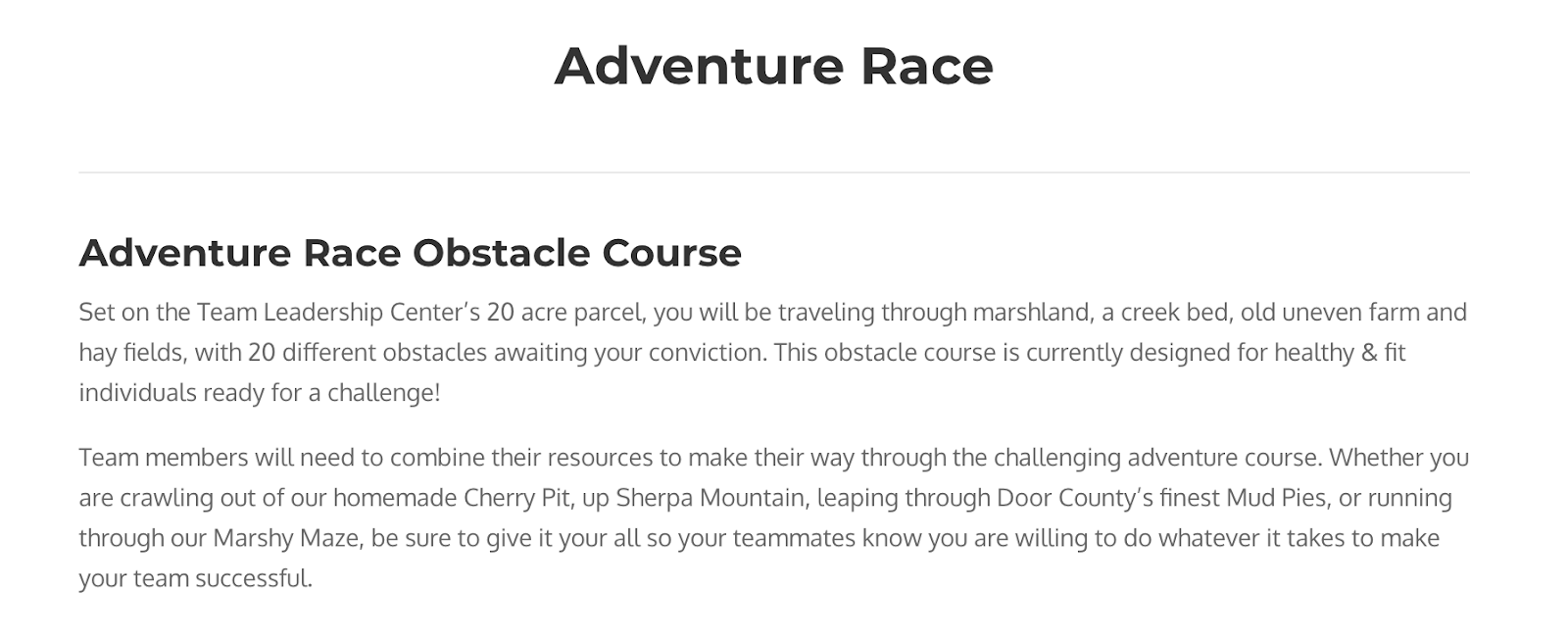
Let’s look at how DC Adventure Center crafts its tour descriptions for adventure tourism.
The Wisconsin-based activity center offers team-building retreats and adventure courses for corporate clients, as well as kayaking and other outdoor activities to the general public.
Since the company caters to two different audiences, its activity descriptions follow suit. An adventure race obstacle course , for example, appeals to corporate groups looking for team-building exercises. “Team members will need to combine their resources to make their way through the challenging adventure course,” the description reads.

Let’s take a look at a different tour offered by DC Adventure Center. The couple’s kayaking retreat is described as a “secluded” experience featuring ”gourmet meals.” The operator here crafts a tour description that will appeal to couples looking for a more exclusive adventure.
There’s a clear distinction between each description since the company is targeting different customers.
Use beautiful imagery
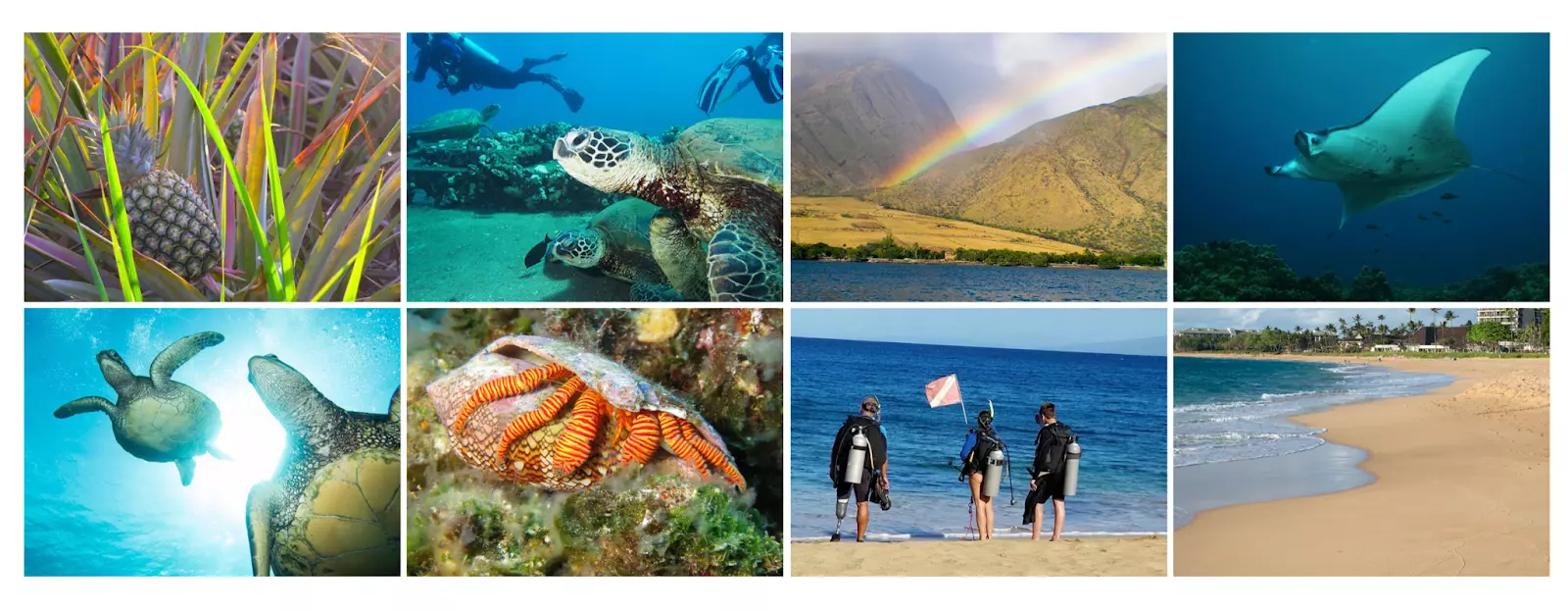
Extended Horizons is a scuba diving company in Maui, Hawaii. Anyone traveling to Hawaii is captivated by the state’s beautiful scenery, and the tour operator makes sure to showcase that within its tour descriptions.
Sealife encounters are a major attraction for scuba divers. Extended Horizons displays vivid underwater photos featuring manta rays, turtles, and other marine life that divers can encounter on their dives. These images evoke a sense of wonder for the underwater world and make customers excited to book.
Images are a great asset to any tour description, especially for outdoor and adventure activities.
Showcase your testimonials
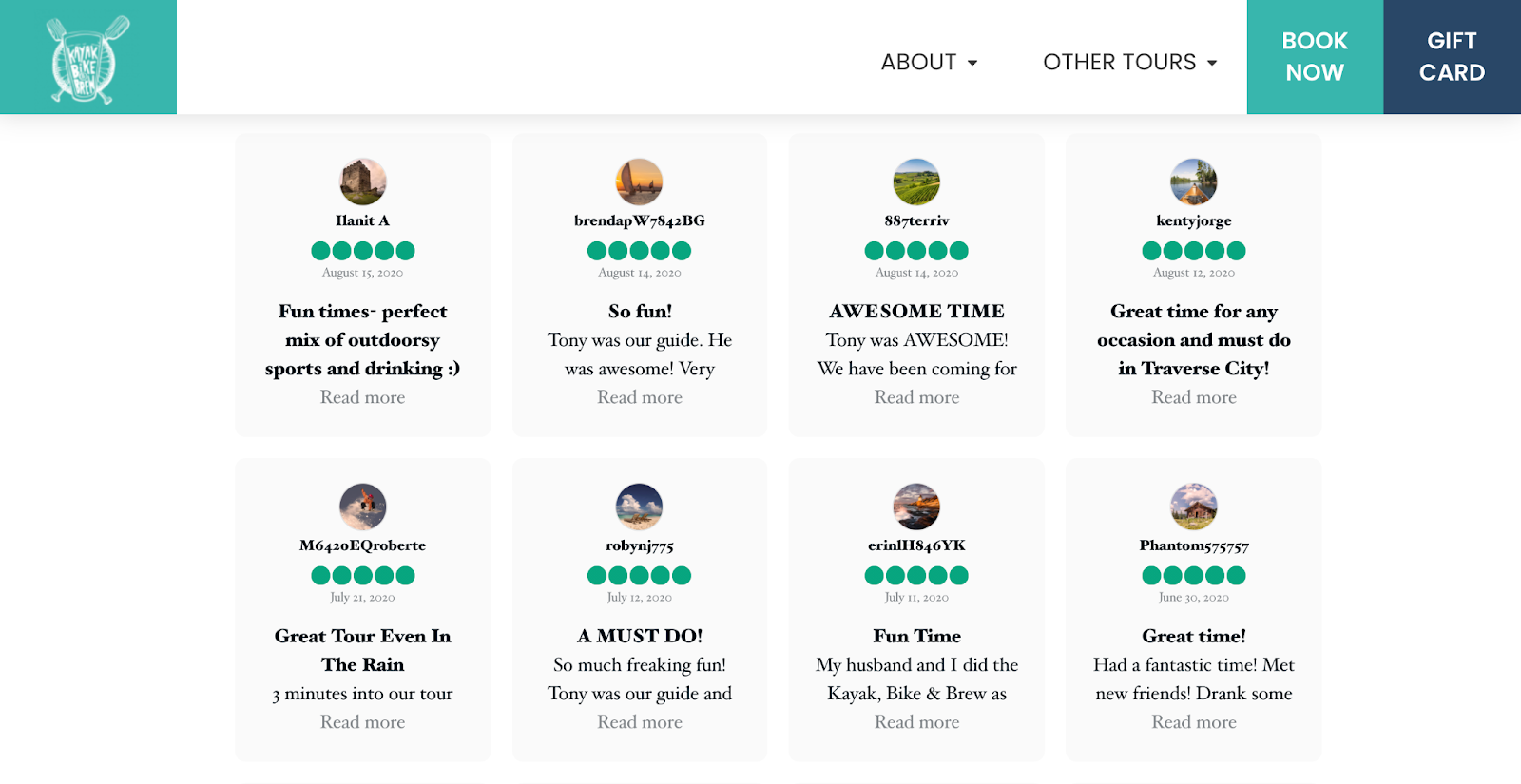
Kayak, Bike & Brew offers a differentiated pub crawl experience where guests bike and kayak to different breweries in Traverse City, Michigan. One of the key components of a good tour description is customer testimonials; positive reviews influence potential customers to book.
The Michigan tour operator capitalizes on this technique on its booking page , where it displays several 5-star Trip Advisor reviews. The reviews are displayed in a format where you can see who left it, their rating, and a short preview of what they said. You can even read the entire review by clicking “read more.”
Use storytelling
Sitka Sound Ocean Adventures , a kayaking tour operator in Sitka, Alaska, leverages the power of storytelling to persuade its customers to book.
The tour operator uses descriptive language to paint the scenes guests will see out in the water — like “mazes of reef and kelp forests” and “a seldom-visited island.” When someone reads the tour description, they can picture how amazing the experience will be.
Know what makes your tours unique
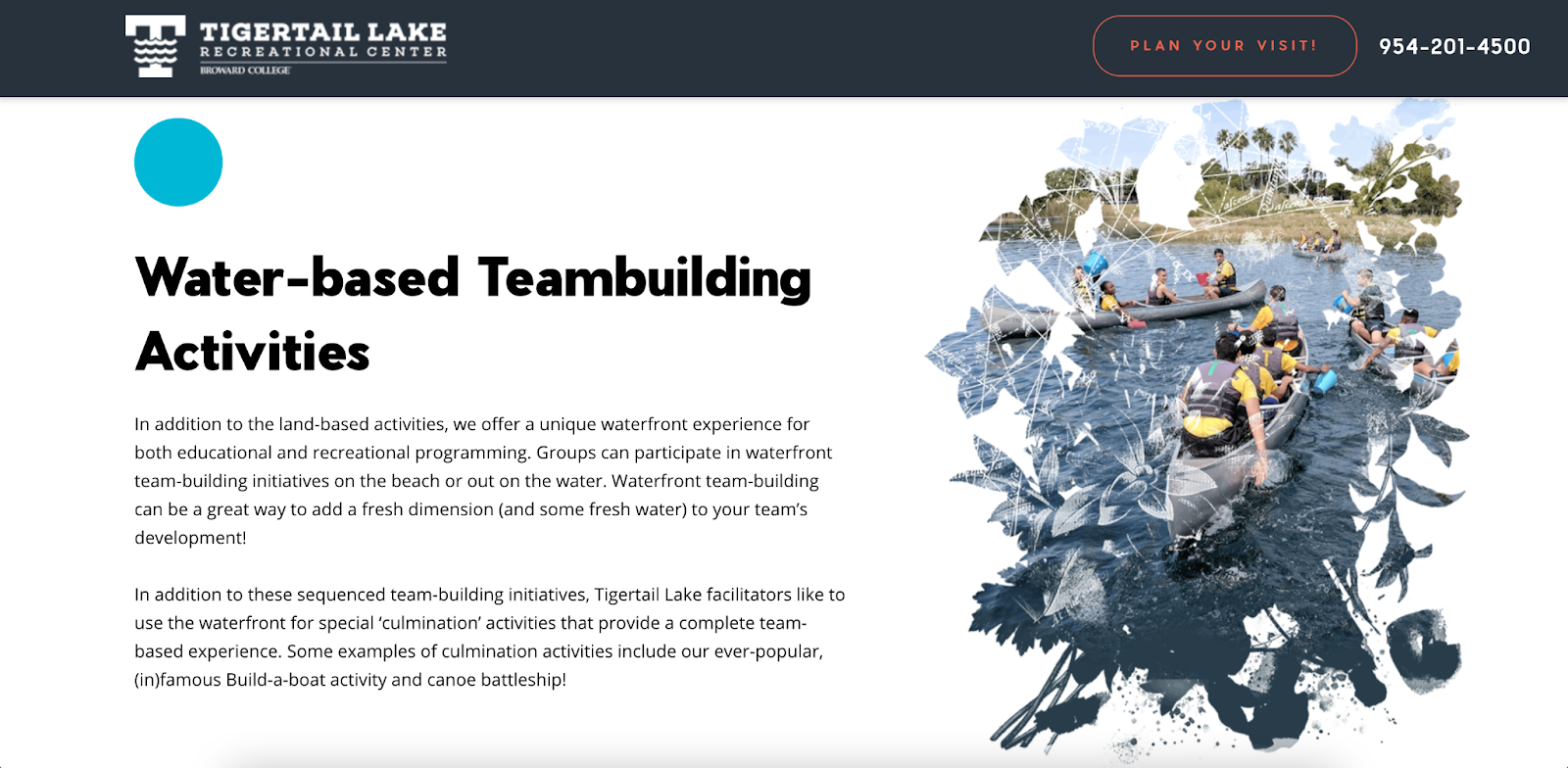
Tigertail Lake Recreation Center offers a number of team-building experiences, including unique water activities. One of the center’s most popular water-based challenges is called “Canoe Battleship, where participants are challenged to sink others’ canoes.
These playful water activities are different than the typical ropes course found in other outlets offering corporate team-building. Tigertail makes sure to highlight these unique water activities by dedicating an entire section of its booking page to them.
It’s important for tour operators to portray their experience in an authentic way so that guests don’t arrive with unrealistic expectations. It’s always better to overdeliver than to underwhelm your guests.
In summary, a great tour or activity description should use the right words and images to persuade your guests to book. Use the above examples as inspiration to improve on your own descriptions.
Remember to leverage storytelling techniques to appeal to your target audience and to highlight the unique features of your tours. You know what makes your experiences so exciting — now make sure your guests know it, too.
Writer Carla Vianna
Related Articles

How to set up email tracking in GA4
Keeping in touch with past, present, and future guests via email brings you closer together. It also gives you an

A detailed guide to GA4 paid ad tracking for tours and attractions
The success of your paid ad campaigns lies in the ability to measure and analyze relevant KPIs — like ad

What is experiential marketing: Definition, why it works & examples
Experiential marketing campaigns are so effective in drawing in customers because people crave real-life experiences more than ever these days.
Get the latest news and resources.
For tours and attractions delivered straight to your inbox each week.
Transform your business now.


11 Critical Components of Effective Tour Descriptions that Sell

Table of Contents
Crafting the perfect tour description.
In the world of travel, the power of a well-crafted tour description cannot be overstated. It’s the bridge that connects a curious traveler to an unforgettable experience. As a representative of Rockon Recreation Rentals, LLC, our mission is to transform this bridge into a compelling invitation, one that not only informs but also captivates and inspires our audience.
Writing tour descriptions is an art that demands more than just listing the itinerary and price. It’s about weaving a narrative that captures the essence of the journey, highlights its unique allure, and resonates deeply with the aspirations of potential travelers. This guide is designed to equip you with the tools and insights necessary to create descriptions that don’t just outline a tour but tell a story that leaves the reader yearning to be a part of it.
From understanding your audience to employing storytelling techniques, we’ll delve into the key elements that make a tour description not just good, but great. Whether it’s an adrenaline-packed adventure or a serene escapade into nature, the right words can turn a simple tour into a must-have experience. Let’s embark on this journey to master the craft of writing tour descriptions that are as enticing as the adventures they represent.

Understanding the Essence of a Tour Description
At its core, a tour description is much more than a simple itinerary or a list of activities. It’s a vibrant tapestry that combines detailed information with the allure of storytelling, designed to transport the reader to the heart of the experience before they even set foot on the journey. This section of the narrative is not just about where the tour will take them, but how it will make them feel, what they will discover, and why it’s an unmissable opportunity.
A well-crafted tour description serves multiple purposes. It informs by providing essential details like duration, locations, and activities. It inspires by painting a vivid picture of the experience, using evocative language to stir the imagination and evoke emotions. It also persuades by highlighting the unique aspects of the tour, subtly nudging the reader towards making a booking.
In essence, a tour description is your first interaction with the potential traveler. It’s an opportunity to showcase your understanding of their desires and to present your tour as the solution to their wanderlust. It’s about creating a connection, building excitement, and setting the stage for an adventure that promises to be as enriching as it is enjoyable. With each word, you’re not just describing a tour; you’re inviting the reader into a story where they are the main character, and the journey is theirs to own.
Key Elements of a Compelling Tour Description
Creating a tour description that stands out requires a blend of creativity, clarity, and customer insight. Here are the essential elements to include in your tour descriptions to ensure they capture the imagination and interest of your audience:
Know Your Audience:
- Enhancement: Dive deep into the demographics, interests, and preferences of your target audience. Are they adventure seekers, luxury travelers, families, or solo explorers? Understanding this helps tailor the description to their specific desires.
- Example: For a family-friendly tour, highlight safety, educational elements, and fun activities for children.
- Template: “Join us on a family adventure where safety meets fun! Discover [destination] through interactive and educational activities that will delight both kids and adults alike.”
Craft a Catchy Title:
- Enhancement: The title should be a creative, concise encapsulation of the tour’s essence. It should spark curiosity and set the tone for what the tour offers.
- Example: “Moonlit Safari: A Nocturnal Adventure in the Serengeti.”
- Template: “[Unique Feature]: [Engaging Description of the Tour].”
Incorporate High-Quality Visuals:
- Enhancement: Use visually striking images that represent the true nature of the tour. These should be high-resolution and professionally taken to best showcase the experience.
- Example: A vibrant photo of a bustling local market for a cultural tour.
- Template: Include a hero image that captures the essence of the tour, followed by a gallery of images showcasing various aspects of the experience.
Leverage Testimonials:
- Enhancement: Use genuine, relatable testimonials that reflect the tour’s value. These should be from identifiable sources to add authenticity.
- Example: “Our family had an unforgettable experience! The kids loved the interactive history lessons, and we were all amazed by the stunning views.” – The Johnson Family
- Template: “[Quote from a testimonial].” – [Name, optionally with demographic information]
Employ Storytelling Techniques:
- Enhancement: Use descriptive language to create a vivid picture of the experience. Engage the senses and emotions of the reader.
- Example: “Imagine walking through ancient ruins, the scent of historical secrets in the air, as the sun sets painting the sky in hues of orange and pink.”
- Template: “Imagine [engaging sensory experience] as [descriptive action or emotion], where [unique aspect of the tour].”
Address Potential Questions:
- Enhancement: Think of possible queries or concerns your audience might have and address them proactively in your description.
- Example: “Worried about getting around? Our tour includes comfortable transportation to each site, with accessibility options available.”
- Template: “Concerned about [potential issue]? We’ve got you covered with [solution provided].”
Highlight Unique Selling Points:
- Enhancement: Clearly articulate what sets your tour apart from others. This could be exclusive access, unique activities, or special insights.
- Example: “Exclusive after-hours access to the Louvre, away from the daytime crowds.”
- Template: “Experience [unique aspect] that sets our tour apart, offering you [specific benefit].”
Optimize for SEO:
- Enhancement: Identify and incorporate relevant keywords that potential customers are likely to use when searching for similar tours.
- Example: Use terms like “family-friendly safari” or “luxury Paris tour.”
- Template: Ensure your tour description naturally includes phrases like “[Key Feature] in [Destination].”
Ensure Tour Description Readability:
- Enhancement: Organize the content with clear headings, bullet points, and short paragraphs to enhance skimmability.
- Example: Use headings like “What You’ll Experience,” “Tour Highlights,” and “What’s Included.”
- Template: “[Heading]: [Concise and informative content].”
Be Honest and Transparent:
- Enhancement: Provide accurate descriptions without exaggerating. Set realistic expectations to build trust.
- Example: “This hike is challenging but rewarding, with breathtaking views awaiting at the summit.”
- Template: “Expect [realistic experience], perfect for [target audience].”
Keep it Clear and Concise:
- Enhancement: Balance descriptive language with succinctness. Provide essential information without unnecessary details.
- Example: “A 3-hour guided tour covering the main attractions, with free time to explore at your leisure.”
- Template: “Enjoy a [duration] tour of [key attractions], including [specific activities or experiences].”
By enriching each element with these enhancements, examples, and templates, your tour descriptions will not only captivate potential customers but also provide them with the clarity and excitement needed to make a booking decision.
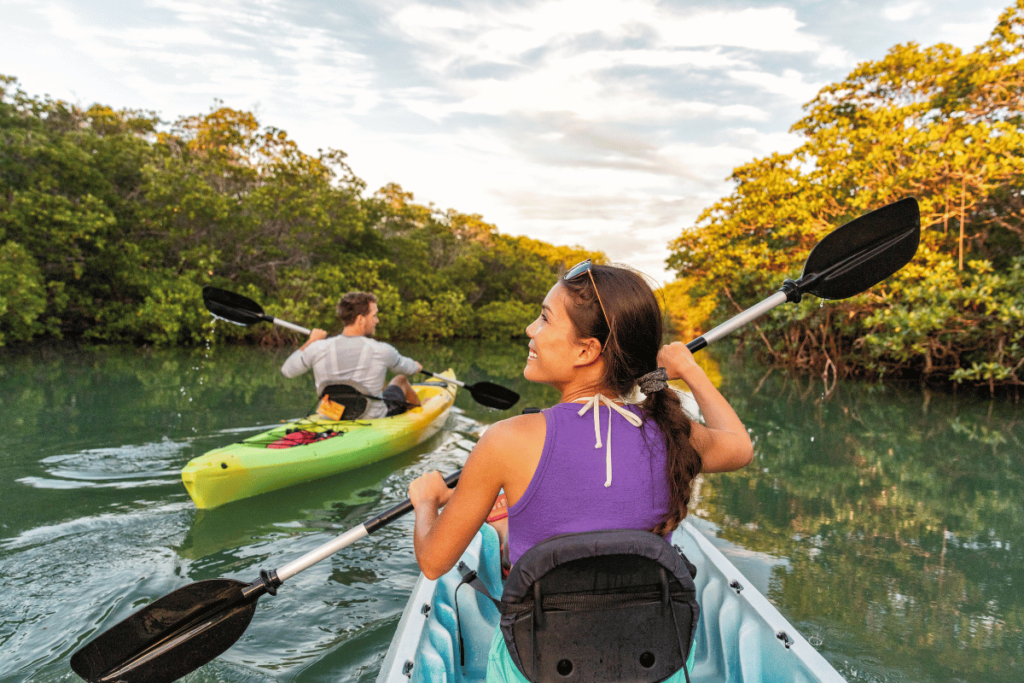
The Art of Crafting Memorable Tour Descriptions
In conclusion, the art of writing tour descriptions is a crucial skill in the travel industry, one that bridges the gap between a potential traveler’s curiosity and their decision to embark on an adventure. A well-crafted tour description goes beyond mere facts and figures; it tells a story, evokes emotions, and paints a vivid picture of the experiences awaiting the traveler.
Remember, each word in your tour description should serve a purpose, whether it’s to inform, entice, reassure, or inspire. By understanding your audience, employing storytelling techniques, showcasing unique selling points, and maintaining clarity and honesty, you transform your tour descriptions from simple itineraries into compelling narratives that capture the imagination of your readers.
As you apply these principles and techniques, you’ll not only enhance the appeal of your tours but also build a stronger connection with your audience. Your descriptions will become an integral part of the travel experience, setting the stage for unforgettable adventures and lasting memories.
In the dynamic world of travel, where new destinations and experiences constantly emerge, the ability to write captivating tour descriptions is an invaluable asset. It’s not just about selling a tour; it’s about inspiring a journey and creating a sense of wonder and anticipation. So, embrace this art form, and let your words be the window to the extraordinary experiences that await your travelers.
Frequently Asked Questions
Writing an engaging tour description involves understanding your audience, employing storytelling techniques, and highlighting the unique aspects of the tour. Start with a catchy title, incorporate high-quality visuals, and use descriptive language to evoke emotions and paint a vivid picture of the experience. For enhancing your tour descriptions and marketing strategies, consider using Rockon’s online reservation software and exploring services offered by Rockon’s Travel Marketing Agency .
A good tour description is clear, concise, and compelling. It should inform the reader about the tour’s details while also inspiring them to take action. Key elements include a captivating title, engaging narrative, essential tour information, and visuals that complement the text. For insights on crafting such descriptions, Rockon’s article on storytelling in marketing tours and experiences can be a valuable resource.
Yes, storytelling techniques can significantly improve tour sales by creating a more engaging and memorable description. By weaving a narrative that connects with the reader’s emotions and desires, you can make the tour more appealing. For assistance in applying these techniques, Rockon’s Tourism Digital Marketing services can help craft compelling stories.
To make your tour description stand out, focus on its unique selling points, use evocative language, and include testimonials and high-quality images. Addressing potential questions proactively can also set your description apart. For further differentiation, leveraging Rockon’s Travel SEO Services can improve visibility and attract more potential travelers.
Include information about the tour’s itinerary, unique features, benefits, and any logistical details like duration and price. Also, incorporate storytelling elements to describe what participants will see, feel, and experience. For optimizing your tour descriptions for better conversion, consider Rockon’s Travel Website Design services.
Anticipate and address common concerns directly in your tour description, such as transportation, safety measures, and accessibility. Providing clear, reassuring information can help alleviate worries and encourage bookings. For strategies on enhancing customer service and addressing concerns, this article on customer service in tourism offers excellent insights.
Best practices for SEO include using relevant keywords, creating meta descriptions, and ensuring your content is engaging and informative. This helps your tour descriptions rank higher in search engine results. For detailed strategies on SEO, Rockon’s article on the cost of SEO for travel businesses provides a comprehensive overview.
Use high-quality, relevant images that showcase the tour’s highlights and experiences. Visuals should complement the text and help the reader visualize the tour. For tips on selecting and using images, Rockon’s Travel Marketing Agency can offer guidance and services to enhance your visual content strategy.
Understanding your audience allows you to tailor your tour descriptions to their interests, preferences, and concerns, making the content more relevant and appealing. For insights into audience analysis and targeted marketing, Rockon’s Travel Marketing Agency provides expert services.
Balance is key. Use short, impactful sentences and paragraphs, and avoid jargon. Focus on sensory details and vivid imagery to create a compelling narrative. For refining your content strategy and ensuring clarity and engagement, Rockon’s Travel Website Design services can help craft effective tour descriptions.
Rockon Recreation Rentals partners with Commercial Tour, Activity, and Rental Companies to populate the Largest Directory of Outdoor Recreation Rentals.
In doing so, Rockon provides the tour, activity, and rental companies with Activity Booking Software that contains the tools, systems, and processes that help manage bookings, accounting, communications, and record keeping.
Related Articles

Set Up a Free Booking Software for Small Business in 30 Minutes

15 Drivers to Gain More Off Peak Season Bookings

Maximizing Earnings with Easy Affiliate Marketing for Tour Companies

40 Booking Confirmation Email Templates to Increase User Experience
View More Articles
Do you want
more bookings?
Hello there! Rockon has created millionaires from those that used Rockon’s Booking Software and Travel Marketing Services. Will you be next? Let us guide you!
Top Destinations
- Central Florida
- Bonita Springs
- Fort Lauderdale
- Crystal River
- Panama City Beach
- St. Augustine
- Delray Beach
Username or email address *
Remember me
Lost your password?
Sign up for Rentals
Email address *
A password will be sent to your email address.
Receive Periodic Updates to Newly Added Experiences & Deals
Your personal data will be used to support your experience throughout this website, to manage access to your account, and for other purposes described in our privacy policy .
Receive Receipts, Confirmations, and More

(888) 822-7988

How to Write a Great Tour Description
You have a great tour, but the people who look at your booking website stay for just a few seconds and click away. It could be that your booking system is too confusing for them to effectively navigate, or it might simply be that your description doesn’t grab their attention.
Creating an exciting summary that captures what it is truly like to be on your tour takes skill. It’s important to explain your tour vividly and clearly, without sounding overhyped.
Here are a few tips to get you started:
Use Active Voice
Even the best summary will sound dull if you use passive voice. If you’re not sure what that means, compare these two sentences: Jill threw the ball. The ball was thrown by Jill. The first one is active voice, and the second is passive. Active voice is typically seen as more engaging by readers and should be used whenever possible. You can easily scan your summary for potential passive voice by searching for the word ‘was’ or ‘has been.’ If you see them, read the sentence carefully to see if it is passive voice.
Come up With a Great Hook
What is it exactly that makes your tour so special? If there were two tour companies in the same area, what would make yours different from the other one? What makes your tour special is your hook. This could be a tour guide who always knows where the rhinos are at any given time of day, or the captain of a ship who can entertain and enlighten as well as steer.
This is probably the most important part of your tour description because it shares the value of what the customer will be seeing, and what makes you different. It’s okay to take your time on this, and throw out a lot of ideas to get you started. Most writers come up with a minimum of 6 ideas before settling on the one that will be their main focus.
Who, What, When, Where, Why and How
In journalism, these 6 questions are essential to any article, and a tour description is no different. In order to be clear and concise, you need to answer some or all of these questions.
Who will you be going with? Is it someone who has a skill that makes them better than a normal tour guide? What will you be seeing? You might not need to state when, unless there is a particular sight that can only be seen at certain times a day, such as tide pools. Where you are going is critical if you’ll be visiting a quaint village or an ancient ruin.
Perhaps the most important question is why. Why should they go with you? Why are you different? Why do they want to go with your tour company?
All of these things need to be addressed to make a great summary.
Your tour description could be the primary reason customers choose you, or don’t. Take the time needed to make your tour description the very best you can so your customers will be glad to click the sign up button. For more information, visit TourTools at https://www.tourtools.com/

This site uses cookies. By continuing to browse the site, you are agreeing to our use of cookies.

How to Write Powerful Tour and Activity Descriptions to Increase Bookings

Writing marketing copy that will pique potential customers' interest is a delicate dance—your site visitors and prospective guests need to get a taste of the tour or activity without too much effort. Resent research finds that the average attention span in 2015 is a mere 8.25 seconds , down from 12 seconds since 2000. So if you want your prospects to book one of your tours or activities, you need to find ways to keep them engaged and make a booking decision—and preferably in fewer than 9 seconds.Use these tips to write powerful and impactful tour and activity descriptions that can help to increase bookings each season.
Create a Scene
Tours and activities are immersive experiences, not products. Engage a prospect by showing them how they will feel, what they will see, and what they will experience during their visit—not just what a great time they will have. Offer up some concrete information about the tour or activity, but turn it into a story.Here's a sample description for a sailing tour around San Francisco Bay: "Our sunset sailing tour takes you to Alcatraz, Angel Island, along the Golden Gate Bridge, and down the city front. Price includes beer and wine!" And here's a revised version: "Explore the beautiful coast of San Francisco Bay with our 90-minute narrated tour. We'll depart from Pier 39 and sail over to Alcatraz Island where you can see the historic prison. Next, it's on to Angel Island, one of the most enchanting islands in the Bay Area. Grab your camera to capture the silhouette of the Golden Gate Bridge as we sail around Sausalito and take in the views of the city skyline as we head back to the pier around sunset. Enjoy beer and wine of your choice, compliments of our crew!" The first description provides just the basics and gives the reader an idea of what the tour is about. But it doesn't help to create a scene in the eyes of the reader. The second example walks the guest through the experience, giving the reader a taste of the actual experience.
Use Visuals to Your Advantage
This infographic about The Science of Storytelling by OneSpot indicates that the brain processes images 60 times faster than words. This is why the concept of "showing, not telling" can be so powerful when it comes to promoting tours and activities—you want to be able to engage and entice the customer in the fastest and most impactful way possible. Peruvian ecotourism company Rainforest Expeditions has created comprehensive tour descriptions for its website, complete with a photo gallery, a sample itinerary, and a list of activities guests enjoy on the tour. While lengthy and detailed, the presentation of visuals can be a powerful addition to any description.
Use visual media, such as professional photographs or video snippets of the tour or activity experience.
Use visual media, such as professional photographs or video snippets of the tour or activity experience. You might even consider adding user-generated snapshots of the experience in your descriptions for a more personalized touch—visitors can see photos of the experience form a guest's point of view. Embed a video right next to the written description, add large professional photos to the description, and link out to a gallery of images sent to you by happy customers or candid shots you have taken yourself. Captain K's Bait, Tackle & Charter has created an informational video on YouTube and embedded it right with the landing page about their fishing charter packages and rates. This is an impactful way to attract the site visitor's attention and provide relevant information quickly. Share Highlights with Bullet Points Bullet points are easy on the eyes and great for readers who tend to scan content rather than read every single line. The experts at Ironpaper, a digital agency based in New York, share some web design statistics in this blog post and indicates that 70 percent of people look at lists with bullet points. Bullet points make web pages easier to read and can be an attractive element for any tour and activity description.Distill some of the highlights of your tour or activity in about four to five bullet points so that every reader has some takeaways to work with when choosing one activity over another. For example, a brewery tour operator might include a set of bullet points like this below their tour summary:
- Available Tuesdays, Thursdays, and Saturdays
- Includes tour of brewery and restaurant
- Complimentary pour samples
- Complimentary beer of choice at the end of the tour
- Free parking
For a live example, take a look at how Alpine Endeavors, a company that offers rock climbing tours and skills training programs, breaks down their description in an easy-to-read format . They use bullet points to break out the description and include a basic itinerary along with what is and what isn't included in the rate. Provide Preparation Tips If you sell hard adventure experiences such as rock climbing, trekking, and whitewater rafting, or soft adventures such as snorkeling, horseback riding, and snowshoeing that require some basic skills and experience, make sure your adventure seeker can determine if they are fit for the experience. Unless you plan on selling an educational or training component as part of the experience, your visitors need to be comfortable using special gear and equipment, and feel confident that they can handle the high-energy experience. Southern Yosemite Mountain Guides , a company that coordinates mountain trips around Yosemite high country, does a great job with this by providing a breakdown of equipment provided, preparation and experience requirements, and indicates whether climbing gear rentals and equipment are included in the cost.If you're offering equipment rentals, consider including them as an add-on option when the guest checks out. You can use online booking software like Peek Pro to list a set of add-ons for each tour or activity you offer so that everything is available to the traveler within a few clicks.
Don't Share Too Many Options Upfront
Consider the effect of having too many choices, as illustrated by the famous jam study conducted by psychologists Sheena Iyengar and Mark Lepper . Results of this study found that when shoppers had 24 flavors of jam available, only 3 percent who tasted the samples purchased something. When only six options were available, 10 times as many shoppers —30 percent—purchased at least one jar of jam.Limiting the number of options available can help to grab your prospects' attention without overwhelming them. Your prospects will still have the option to page through your entire catalog or menu of offerings at another time but those first few interactions with your company—those first visits to your website—need to be as straightforward and impactful as possible.Consider limiting your offerings to one to two in each category on the main pages of your website. For example, a kayak tour operator who offers 10 different kayaking experiences for singles, couples, and families could pick two popular experiences for each customer type and elaborate on only those six experiences with fully fleshed-out descriptions, photos, and video clips. The remaining four options could be listed elsewhere on the website with summaries, photos, and relevant booking information.
Final Thoughts
Helping prospects understand what types of experiences you offer and what to expect during their visit can help you drive more bookings. You want to share many highlights of the tour or activity to appeal to your target customer but you also want to leave some things to the imagination—giving your prospects a taste of what's to come can encourage them to book and get excited about the experience. Use these writing tips and presentation ideas to drive more bookings for your tour and activity business each season.
Table of contents
Recommended Posts
Sign up to our newsletter..
Lorem ipsum dolor sit amet, consectetur adipiscing.
Want to learn more about Peek Pro? See it in action during our live demo
See related posts

How to Design a Booking Page for Equipment Rental Businesses

7 Ways to Be Unstoppable With Peek Pro 7
Today’s world is unpredictable. Every day we face unique challenges that need to be confronted head-on. This can become overwhelming, and we

Announcing: Peek Pro 6
Tour parallèle
Cet article explique ce que sont les tours parallèles. Vous y trouverez donc les caractéristiques d'un tour parallèle, les principales pièces d'un tour parallèle et les opérations que peut réaliser ce type de tour.
Qu'est-ce qu'un tour parallèle ?
Un tour parallèle est un type de tour qui permet d'usiner des pièces par tour. Un tour parallèle est donc une machine-outil utilisée pour transformer un solide en une pièce bien définie.
Le tour parallèle se caractérise par être un tour manuel, c'est-à-dire qu'un opérateur est nécessaire pour faire fonctionner le tour parallèle.
Le fonctionnement d'un tour parallèle consiste à faire tourner le solide à usiner autour de son axe de symétrie et, quant à lui, la matière est enlevée sous forme de copeaux. Ainsi l’outil avance et coupe une partie du solide pour le convertir en la pièce usinée souhaitée.
Le tour parallèle est également appelé tour mécanique ou tour conventionnel .
Pièces d'un tour parallèle
Les pièces d'un tour parallèle sont :
- Banc : partie du tour parallèle sur laquelle reposent tous les composants du tour. Il contient des guides qui permettent aux autres parties du tour parallèle de se déplacer.
- Poupée fixe (mandrin) – partie du tour parallèle dans laquelle se trouvent tous les engrenages qui transmettent une vitesse angulaire au mandrin. Le plateau est l'élément tournant de la tête fixe dans lequel est maintenue la pièce à usiner.
- Contre-pointe (contre-pointe) – Partie du tour parallèle utilisée pour mieux maintenir la pièce lors du tournage entre les points. Également utilisé pour maintenir un foret ou un alésoir lors du perçage ou du taraudage de trous.
- Chariot porte-outils (ou tourelle porte-outils) : partie du tour parallèle dans laquelle est placé l'outil qui va usiner la pièce. Il peut être déplacé dans les trois axes pour usiner la pièce.
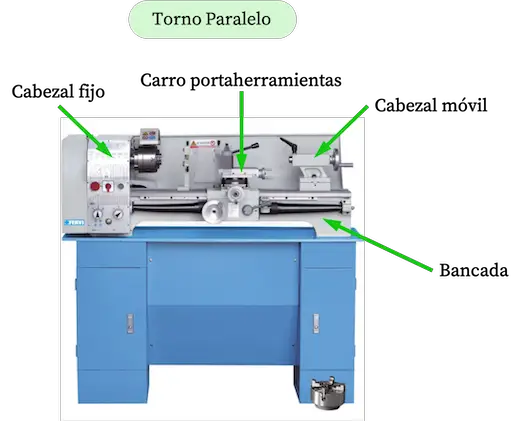
Accessoires pour tours parallèles
Les accessoires suivants aident le tour parallèle à usiner la pièce :
Chacun de ces outils pour le tour parallèle est expliqué plus en détail ci-dessous.
Les mandrins sont utilisés pour maintenir des pièces difficiles à saisir en raison de leur taille et de leur forme. Les deux types de mandrins les plus couramment utilisés sont le mandrin à trois mors et le mandrin à quatre mors.
Le mandrin universel à trois mors est principalement utilisé pour le maintien de pièces rondes et hexagonales.
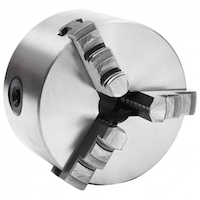
D'autre part, le mandrin à quatre mors permet de maintenir différents types de pièces, même celles de forme très irrégulière, puisqu'il est composé de quatre mors réglables indépendamment.
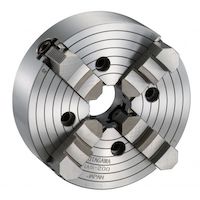
Les lunettes sont des instruments utilisés pour soutenir de longues pièces. Cet outil de tour parallèle est placé dans les guides du tour, contribuant ainsi à maintenir la pièce depuis une position intermédiaire. Il existe des lunettes fixes et des lunettes mobiles.
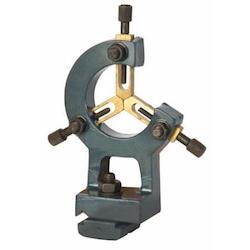
Il existe différents types de mandrins qui aident à maintenir l'outil de coupe. Ainsi, selon l'opération d'usinage que vous souhaitez réaliser et l'outil que vous souhaitez utiliser, il est plus approprié d'utiliser un mandrin de perçage ou un autre.
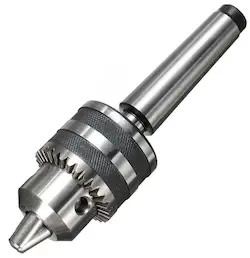
Opérations de tour parallèle
Avec un tour parallèle, les opérations d'usinage suivantes peuvent être réalisées :
- Cylindre : le diamètre de la pièce est réduit.
- Façade (ou fronting) : l'extrémité est usinée. Dans cette opération de tournage, l'outil avance dans le plan perpendiculaire à l'axe de rotation.
- Usinage conique : le diamètre de la pièce est réduit, lui donnant une forme géométrique de cône.
- Copié : le profil d'une autre pièce déjà usinée est copié.
- Perçage : un trou est réalisé dans la pièce en la perçant.
- Forage : un trou est agrandi ou la qualité d'un trou existant est améliorée.
- Rainurage – Une rainure est usinée dans la pièce.
- Séparation : un filetage est réalisé sur la pièce, soit interne, soit externe.
- Moletage (ou moletage) : un état de surface est donné à la pièce pour faciliter sa préhension.
La vidéo suivante explique les principales opérations que peut effectuer un tour parallèle :
Histoire du tour parallèle
Enfin, nous verrons quelle est l'origine du tour parallèle et qui l'a inventé, puisqu'il a été l'un des premiers types de tours inventés.
Le tour parallèle a été inventé en 1839 par Joseph Whitworth, un ingénieur anglais qui a apporté plusieurs améliorations aux systèmes de fabrication de l'époque.
Depuis, le tour parallèle a subi de petites améliorations, mais ses principales caractéristiques et son fonctionnement sont similaires.
Cependant, les tours parallèles sont de moins en moins utilisés. Actuellement, le tour parallèle est surtout utilisé dans des ateliers d'apprentissage ou pour réaliser des travaux spécifiques, car il est remplacé par d'autres types de tours qui permettent de fabriquer des pièces de manière plus rapide et plus précise. De plus, le tour parallèle présente l'inconvénient de nécessiter le recours à un opérateur qualifié.
Laisser un commentaire Annuler la réponse
Votre adresse e-mail ne sera pas publiée. Les champs obligatoires sont indiqués avec *
Site Internet
Enregistrer mon nom, mon e-mail et mon site dans le navigateur pour mon prochain commentaire.

Download WP Travel
Please enter your email to download WP Travel and also get amazing WP Travel offers and Newsletters.
How To Write An Ultimate Tour Description? Pro Tips (2024)
Home » Blog » How To Write An Ultimate Tour Description? Pro Tips (2024)
Writing a good tour description is the key to increasing your site’s visibility and driving more traffic .
With the right tour description, you could get 50-100 visitors per day using the best tour operator plugin for your travel website
But before we dive into the steps to write An ultimate Tour Description with pro tips included, I was curious if you are; thinking of creating a travel and tour booking website within minutes, without any hassle of coding and hiring highly paid developers?

You can Get WP Travel Pro to start creating a travel booking website instantly.
You can explore and test the best travel agency themes and templates to find the one that perfectly aligns with your website. This way, you can ensure your website suits your needs and preferences seamlessly.
The purpose of this guide is to help you write a high-quality touring description and increase in page views, page views, clicks, and traffic to your tours section on your website.
➤ Here is the complete list of tour operator software.
Table of contents
What is tour description.
- 2. Trip Facts/Overview:
- 3. Start with a hook:
- 4. Bulleted List of Additional Details :
- 5. Define your target customers:
6. List your unique selling points (USPs):
- 7. Identify your target audience:
- 8. Get inspired by other examples:
WordPress Tour descriptions should be written in an engaging and personable style.
This can be achieved by exploring the interests of your country, businesses, and tourist areas — and presenting that information through photos or video.
Tour descriptions are a way to sell your next tour. You can use them to describe the experience, culture, and activities you’ll be doing during your tours.
Tour descriptions should give as much information as possible to allow potential customers to make a decision on whether they want to take your tour or not.
In this guide, we will outline the steps you will need to follow in order to write a great tour description for your website and help drive more traffic there.
Useful article : How to Write A Travel Itinerary with Steps? ( Depth-Guide)
Tour description is an essential marketing tool for every tour operator where you tell the world about your tour and what it offers.
It serves as a sales brochure, explaining to the public what their ticket buys them and how they can expect it.
A tour description is a document that describes a tour or activity and its purpose.
It’s meant to help potential participants understand what they’re signing up for, and why they should be interested in it.
The main use of tour descriptions in a Tour Booking System WordPress is to guide and give proper information to the clients.
A good tour description can help you stand out from your competitors and make you more appealing to your clients.
You may find it useful : Why should you use WP Travel Plugin for your Travel Website in 2024?
Steps to write an ultimate Tour Descriptions: Pro Tips
A tour description is the selling point for your website.
Of course, it does no good to just have a tour description. In order to provide information on what your tours are like, you need to first think about how you’re going to write them.
Here are the steps for writing a proper tour description.
1. Title:
A great title is crucial for any tour description. It’s the first thing people see and remember, so it needs to be captivating and interesting.
The title of your tour description is its headline. It’s the first thing that people see and it should be enticing enough to get them to click on the link.
The title should be short, sweet, and compelling. Here are some tips on how to write a good title:
- Use emoticons and other imagery to make your title stand out
- Use strong verbs in your title
- A keyword phrase that is relevant to your product/service.
- The title should be short, sweet, and compelling.
- Make sure the title is about your tour
- Don’t use too many words in your title
2. Trip Facts/Overview:
In a few sentences, describe the trip in general. This is the first impression of your trip, so make sure that you capture it well.
In this section, briefly describe how you will be using the trip (i.e., what your goals are for the tour).
You can think of the trip description as a mini-tour itinerary, listing everything you’ll be doing on the trip, including where and when, who will be involved, and what the experience is.
Here are some tips on how to write an effective tour description:
- Start with a summary of your trip. This should include your destination, what activities you plan on doing while there, who will be involved (if any), and any special circumstances that might affect your trip.
- Focus on what you’ll be doing in each activity category (e.g., hiking, biking, sightseeing). The more specific you get here, the more useful this section will be for prospective guests who are interested in booking your tour or reserving a spot on one of your trips.
- Include all the important details about each activity category — dates/times/durations; places visited; prices per person/per day or per group; typical activities offered; minimum age requirements; required gear list; weather and other conditions at each stop; safety tips for certain activities like biking or white-water rafting; etc.
- If you’re planning a multi-day tour, provide a brief description of each day’s activities so potential travelers know what they can expect from their experience on the trip (and how much free time they’ll have along the way).
- If there are any special events or benefits associated with booking through your company, mention those here as well. For example: “Offering free trips to new destinations for first-time travelers.”
3. Start with a hook:
The first thing you need to do is come up with an awesome hook.
A hook is the first sentence or paragraph of your description that grabs the reader’s attention and makes them want to read more.
In this case, it should be something that captures their attention and makes them want to read more.
The best way to do this is by using action words like “wanted” and “hated” or even just simply saying “loved”. These will make them want to know what happens next, so you need a good start.
You want to start with a hook — something that makes people interested in your tour.
If you’re in Kathmandu, for example, and you want people to come on your tour and see the Kathmandu Durbar Square, then maybe your hook would be “See the Kathmandu Durbar Square on this private guided tour.”
Or maybe it’s “See the Kathmandu Durbar Square from this helicopter ride.”
Whatever it is, make sure it’s something that will get people excited about your tour.
Explore more : How to start a successful tour company from scratch?
4. Bulleted List of Additional Details :
Bullet points are the best way to present information in a concise manner, as they’re easy to scan and understand at a glance.
You can use bullet points for highlighting key points, adding extra detail about your experience, and/or listing multiple aspects of your tour experience.
You can break the subheadings of the tour in the following ways:
- Highlights of the Trip
- Extra Services
- Inclusions (Meals, Transportation)
- Exclusions (Alcoholic Beverages, Souvenirs, Personal Expenses)
- What to Pack/Carry?
- Gears for the Tour
- How to Reach the Pickup Location
- Cancellation Policy
Learn more : How to Become a Successful Tour Operator?(10 Tips to Success)
5. Define your target customers:
Your target customers are the people who will benefit from your tour. They are the audience you want to connect with.
This step is essential to successful writing. If you do not know who you are writing for, how can you know what it will take to make them happy?
Targeting your audience enables you to give them a reason to join your tour, and in turn, helps you keep them engaged and interested in what they read.
USPs are the things that set you apart from other tour operators and attractions.
They’re what will make your tour stand out from the crowd.
They are what potential clients will want to see, hear, and do when they book with you. USPs should be listed at the top of your tour description so that potential clients can see them first.
7. Identify your target audience:
The first step to writing an impactful tour description is to identify your target audience.
This could be a group of people, an industry, or even a particular region. Once you know who you are writing for, the next step is to write their story.
The story should include details about their lives and how they feel about traveling and experiencing new things.
For example, if you are writing a tour description for a Manang tour, then you would want to focus on the following aspects:
- Itineraries of the Trip
- Accommodation
- Gears Required
You may find it valuable : How to Create Content Marketing Strategies for Travel Industry?
8. Get inspired by other examples:
When you’re writing your tour description, it can be helpful to look at some of the tours that have inspired you and see how they are formatted.
You can find these tours by searching for “tour descriptions” in Google, or by visiting sites different sites of your competitors.
Notice how each tour description has a short summary of what the tour is about, followed by the details of the experience.
If they are not already used in your city, consider looking up similar tours on other sites to get an idea of how they are formatted.
In this article, we have discussed the importance of Tour descriptions and the main elements that you should consider when writing your tour description for your WordPress travel site.
Having an attractive tour description is one of the best ways to attract traffic to your site and increase your page views, and page impressions, as well as Clicks and traffic to your tours section.
To sum up, Tour descriptions should be written in a style that your site visitors could find familiar, relatable, and engaging.
Follow the tips listed above, and you should be well on your way to writing high-quality touring descriptions. Good luck!
If you liked this article, then subscribing to our YouTube Channel for WordPress video tutorials would be the cherry on top.
You can also find us on Facebook , Instagram, Twitter, Linkedin , TikTok , Pinterest , Reddit , and our dedicated engaging Facebook user community ,
Further, if you have any queries, please submit them to our contact page .
Get WP Travel Pro and start creating your travel and tour booking website within minutes without any hassle of coding.

Yam Bahadur Chhetri is a content writer and vivid contributor to the WordPress community and a WordPress enthusiast with an experience of 7+ years in the relative field. He also loves to develop WordPress Themes, Plugins, and custom WordPress development for clients.
Leave a Reply Cancel reply
Your email address will not be published. Required fields are marked *
Save my name, email, and website in this browser for the next time I comment.
- Join 6000+ WP Travel Users Community Subscribe the newsletter to get new offers, discounts, and product updates frequently.

Get WP Travel Pro
Create Stunning , SEO friendly and Fully functional Travel website within minutes . No Coding Required !
Suitable for any
- Travel Agency
- Tour Booking Services
- Travel Bloggers
Drive more Sales and Revenues from today !
$ 99 99 USD per year

📢 Santa has sent the gift for Christmas and New Year sales on all WP Travel Pro plans. 🛍️ Use coupon code "XMAS_NEWYEAR2024" at checkout.
Related posts

11 Guideline of a Complete Tour Booking System in (2024)

WP Travel Khalti Checkout: Online Payment Gateway for Nepali Travel Websites

Best Stock Photos Sites For Royalty-Free Travel Images(Updated)
Wp travel modules.
Need more features to save your time and to boost your travel business? WP Travel Pro comes with more powerful modules . While our core travel plugin provides almost all the features that a travel and trekking websites generally needs, our add-ons boost it’s capacity further to make it the best travel engine on WordPress. Whether you want to add new payment method to your site or brush up your trekking listings with beautiful maps show casing your trips, we have all your imagination covered. See all our add ons below to boost your travel website’s features further.

Weather Forecast

Import Export

Partial Payment
Connect with wp travel to join the travel conversation, documentation →.
Explore More
Customer Support →
We are here to help.
Facebook Group →
User Community Forum
Follow On Twitter →
Connect with us on Twitter
- Présentation
- Électroérosion
- Rectification
- Stations de travail
- Packs station + laser
- Nos services
Actualité à la une
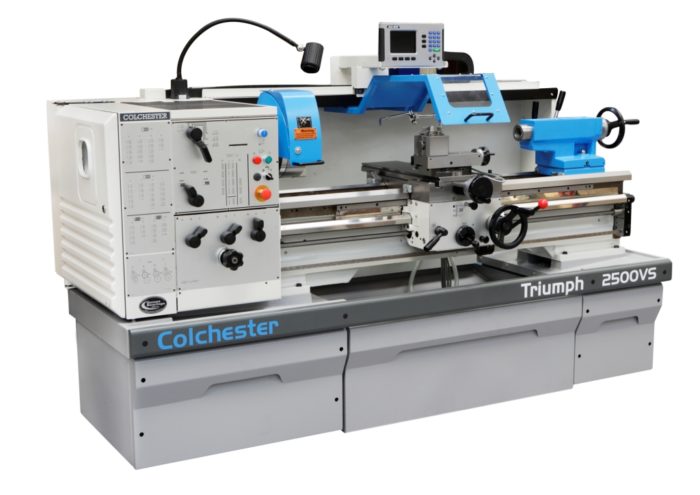
Colchester Harrison
Tour conventionnel Colchester :
Premièrement, les tours manuels Colchester sont renommés dans le monde entier pour leur qualité et fiabilité. Conçus pour résister à une utilisation rude, nos tours offrent des années de service exceptionnelles avec un minimum d’entretien. En même temps, tous les tours manuels de Colchester fournissent un usinage de haute qualité.
Nos tours manuels VS donnent des résultats exceptionnels grâce à leur système de vitesse de broche infiniment variable. Le système de visualisation avec vitesse de coupe constante (CSS DRO) fournit exactement la bonne vitesse pour chaque travail, et permet ainsi une meilleure utilisation des outils, des durées de cycle optimales et une qualité accrue.
Enfin, notre gamme complète est d’une facilité d’utilisation exceptionnelle et propose un large choix d’équipements optionnels. Ces équipements permettent des performances maximales variées même pour les travaux les plus complexes.
Avec un investissement dans des technologies modernes, des techniques de fabrication et d’assemblage de machines-outils. En intégrant les dernières procédures de méthodologie fonctionnement qualité et de gestion, Colchester peut fournir la même solution traditionnelle aux clients qu’auparavant. Cependant, aujourd’hui, les clients ont l’avantage supplémentaire d’une société de fabrication de tours menée par l’ambition d’une stratégie de classe mondiale.
Retrouvez toutes les caractéristiques de tour conventionnel Colchester sur le site constructeur :
https://www.colchester.co.uk/
https://start40.com
Données techniques
Neuf, Neuf délai court
Conventionnel
Nombre d'axes
Passage sur le banc
Passage en barre
Diamètre usinable
Longueur usinable
vous intéresse ?
- Staff picks
- Downloadable
- Collections
- Community members
- Sketchfab Masters
- Animals & Pets
- Architecture
- Art & Abstract
- Cars & Vehicles
- Characters & Creatures
- Cultural Heritage & History
- Electronics & Gadgets
- Fashion & Style
- Food & Drink
- Furniture & Home
- Nature & Plants
- News & Politics
- Places & Travel
- Science & Technology
- Sports & Fitness
- Weapons & Military
- Best selling
- 3D Printable
- For business Sketchfab for Teams Augmented Reality 3D Viewer 3D eCommerce 3D Configurators Find a Partner Pricing Customer Stories
DEMI TOUR CONVENTIONNEL 3D Model
No description provided.

IMAGES
VIDEO
COMMENTS
Here are some of the best tips and tactics you can use for creating powerful tour descriptions. 1. Ensure Your Tour Descriptions Provide Sufficient Detail. First and foremost, it's paramount that your tour descriptions clearly display all of the details that your tour includes. This should include all logistical details, how long the tour will ...
2. Start with a hook. Since a tour description is often your last chance to win someone over, your first sentence has got to be attention-grabbing. Like a headline, it needs to stand out, draw the visitor in, and encourage them to keep reading. And the best way to do that is to zero in on a particular feature of the experience and turn it into ...
Start with a captivating hook. Set a tone and stick to it. Highlight what makes your tour package unique. Paint a vivid picture. Providing necessary tour details. Showcase the benefits of your tour packages. Build trust through testimonials and reviews. Create urgency in your tour descriptions. Call to Action.
Highlight the Tour Itinerary. The next step for writing a tour description is highlighting the tour itinerary. This is where you provide an overview of your tour and what your customers can expect. You should list the major stops and attractions included in the tour and provide some brief information about each one.
9 tips for writing the perfect description for tours and travels. So, let's find out what the 9 key tips are for writing the perfect tour description. 1. Find your Unique Selling Proposition (USP) Competition is only natural within the experiences industry. With so many other businesses providing similar tours and activities, it's sometimes ...
Keep The Description Engaging And To The Point. In the main tour description, you want to include as much information as you can to help travelers make an informed decision. However, you need to find the line between writing a book about it, and being helpful and informative in what you include. It's always worth spending a bit more time on ...
The most efficient way to write experience descriptions for placement across multiple locations is to keep them uniform. This minimizes the amount of work required to update them as changes are made. "Make that description pretty uniform so that you can transfer it across multiple points of sale," Cornell says.
To close the tour description, we advise you to invite travelers to join the tour using one of the following formulas: "See you soon in X!". "Can't wait to show you…". "Don't miss this amazing opportunity to know…. "If you want to learn and have fun in X, this guruwalk is for you!". "Join my tour and discover what…". 4.
Extended Horizons is a scuba diving company in Maui, Hawaii. Anyone traveling to Hawaii is captivated by the state's beautiful scenery, and the tour operator makes sure to showcase that within its tour descriptions. Sealife encounters are a major attraction for scuba divers. Extended Horizons displays vivid underwater photos featuring manta ...
The Art of Crafting Memorable Tour Descriptions. In conclusion, the art of writing tour descriptions is a crucial skill in the travel industry, one that bridges the gap between a potential traveler's curiosity and their decision to embark on an adventure. A well-crafted tour description goes beyond mere facts and figures; it tells a story ...
Tour conventionnel Le "tour conventionnel" consiste à jouer les trous du terrain dans leur ordre numérique exact à moins que le Comité ne l'autorise différemment. Stipulated Round: The "stipulated round" consists of playing the holes of the course in their correct sequence unless otherwise authorized by the Committee.
All of these things need to be addressed to make a great summary. Your tour description could be the primary reason customers choose you, or don't. Take the time needed to make your tour description the very best you can so your customers will be glad to click the sign up button. For more information, visit TourTools at https://www.tourtools ...
Use visual media, such as professional photographs or video snippets of the tour or activity experience. You might even consider adding user-generated snapshots of the experience in your descriptions for a more personalized touch—visitors can see photos of the experience form a guest's point of view. Embed a video right next to the written ...
conventionnel adj (science : classique) conventional adj : traditional, classic adj : Il n'aime pas trop les nouveautés, il préfère la technique conventionnelle. He doesn't really like innovation; he prefers the conventional approach. conventionnel adj (relatif à un accord) contractual adj : Il a bénéficié de l'indemnité conventionnelle.
Le tour parallèle est également appelé tour mécanique ou tour conventionnel. Pièces d'un tour parallèle. Les pièces d'un tour parallèle sont : Banc: partie du tour parallèle sur laquelle reposent tous les composants du tour. Il contient des guides qui permettent aux autres parties du tour parallèle de se déplacer.
Tour conventionnel, tour parallèle à charioter, fileter série SC. Vendu par FMO France Machines Outils. Le tour conventionnel à charioter SC de PINACHO est un équipement complet prêt à fonctionner. Proposant des diamètres de tournage ... Demander un devis 04 28 28 00 55. Comparer.
TUR SC (560,630, 710) est une combinaison de tour conventionnel et de CNC de haute précision. TUR SC (560,630, 710,800, 930, 1100) is together a conventional and a CNC high-precision lathe . Le fourrage ensilé dans des silos à tour conventionnels subit une fermentation qui le rend plus digestible et nourrissant pour le bétail.
Identify your target audience: The first step to writing an impactful tour description is to identify your target audience. This could be a group of people, an industry, or even a particular region. Once you know who you are writing for, the next step is to write their story. The story should include details about their lives and how they feel ...
Comment ajuster la hauteur de l'outil sur un tour conventionnel.
Tour conventionnel Colchester : Premièrement, les tours manuels Colchester sont renommés dans le monde entier pour leur qualité et fiabilité. Conçus pour résister à une utilisation rude, nos tours offrent des années de service exceptionnelles avec un minimum d'entretien. En même temps, tous les tours manuels de Colchester fournissent ...
Tour conventionnel de type ZMM, modèle CU. En savoir plus. Caractéristiques : Voir toutes les caractéristiques. Demander un devis. 01 81 80 42 12. Description. Caractéristiques. Cette série de tours conventionnels propose un variateur de fréquences de la broche.
Cette vidéo issue des archives (1996) du département sectoriel industrie de l'AFPA, elle fait partie d'une série sur l'usinage. le film montre comment décou...
Orbit navigation Move camera: 1-finger drag or Left Mouse Button Pan: 2-finger drag or Right Mouse Button or SHIFT+ Left Mouse Button Zoom on object: Double-tap or Double-click on object Zoom out: Double-tap or Double-click on background Zoom: Pinch in/out or Mousewheel or CTRL + Left Mouse Button